Quick filters:
Sacrificial weapons Stock Photos and Images
 Set of Sacrificial Weapons, Indian, Bengal (?) or Nepalese, 19th century, Indian, Bengal (?) or Nepalese, Steel, wood, brass, 36.25.1284: L. 35 1/2 in. (90.2 cm), 36.25.1285: L. 18 in. (45.7 cm), 36.25.1286: L. 17 in. (43.2 cm); overall 25 1/2 in. (64.8 cm), Shafted Weapons Stock Photohttps://www.alamy.com/image-license-details/?v=1https://www.alamy.com/set-of-sacrificial-weapons-indian-bengal-or-nepalese-19th-century-indian-bengal-or-nepalese-steel-wood-brass-36251284-l-35-12-in-902-cm-36251285-l-18-in-457-cm-36251286-l-17-in-432-cm-overall-25-12-in-648-cm-shafted-weapons-image344662776.html
Set of Sacrificial Weapons, Indian, Bengal (?) or Nepalese, 19th century, Indian, Bengal (?) or Nepalese, Steel, wood, brass, 36.25.1284: L. 35 1/2 in. (90.2 cm), 36.25.1285: L. 18 in. (45.7 cm), 36.25.1286: L. 17 in. (43.2 cm); overall 25 1/2 in. (64.8 cm), Shafted Weapons Stock Photohttps://www.alamy.com/image-license-details/?v=1https://www.alamy.com/set-of-sacrificial-weapons-indian-bengal-or-nepalese-19th-century-indian-bengal-or-nepalese-steel-wood-brass-36251284-l-35-12-in-902-cm-36251285-l-18-in-457-cm-36251286-l-17-in-432-cm-overall-25-12-in-648-cm-shafted-weapons-image344662776.htmlRM2B0MMTT–Set of Sacrificial Weapons, Indian, Bengal (?) or Nepalese, 19th century, Indian, Bengal (?) or Nepalese, Steel, wood, brass, 36.25.1284: L. 35 1/2 in. (90.2 cm), 36.25.1285: L. 18 in. (45.7 cm), 36.25.1286: L. 17 in. (43.2 cm); overall 25 1/2 in. (64.8 cm), Shafted Weapons
 Set of Sacrificial Weapons 19th century Indian, Bengal (?) or Nepalese Just as Durg? was a manifestation of the focused anger of the gods, so too was the godess K?l? (literally, 'the black one') an emanation born of the wrath of Durg?. K?l? is worshiped both as the most bloodthirsty member of the Hindu pantheon and, conversely, as the most life affirming. The goddess's dichotomous nature as destroyer and savior is implicit in these three sacramental weapons, which were used in the ritualistic slaughter of animals offered to her as sacrifices.K?l? is said to have sprung fully formed, in the mid Stock Photohttps://www.alamy.com/image-license-details/?v=1https://www.alamy.com/set-of-sacrificial-weapons-19th-century-indian-bengal-or-nepalese-just-as-durg-was-a-manifestation-of-the-focused-anger-of-the-gods-so-too-was-the-godess-kl-literally-the-black-one-an-emanation-born-of-the-wrath-of-durg-kl-is-worshiped-both-as-the-most-bloodthirsty-member-of-the-hindu-pantheon-and-conversely-as-the-most-life-affirming-the-goddesss-dichotomous-nature-as-destroyer-and-savior-is-implicit-in-these-three-sacramental-weapons-which-were-used-in-the-ritualistic-slaughter-of-animals-offered-to-her-as-sacrificeskl-is-said-to-have-sprung-fully-formed-in-the-mid-image458602039.html
Set of Sacrificial Weapons 19th century Indian, Bengal (?) or Nepalese Just as Durg? was a manifestation of the focused anger of the gods, so too was the godess K?l? (literally, 'the black one') an emanation born of the wrath of Durg?. K?l? is worshiped both as the most bloodthirsty member of the Hindu pantheon and, conversely, as the most life affirming. The goddess's dichotomous nature as destroyer and savior is implicit in these three sacramental weapons, which were used in the ritualistic slaughter of animals offered to her as sacrifices.K?l? is said to have sprung fully formed, in the mid Stock Photohttps://www.alamy.com/image-license-details/?v=1https://www.alamy.com/set-of-sacrificial-weapons-19th-century-indian-bengal-or-nepalese-just-as-durg-was-a-manifestation-of-the-focused-anger-of-the-gods-so-too-was-the-godess-kl-literally-the-black-one-an-emanation-born-of-the-wrath-of-durg-kl-is-worshiped-both-as-the-most-bloodthirsty-member-of-the-hindu-pantheon-and-conversely-as-the-most-life-affirming-the-goddesss-dichotomous-nature-as-destroyer-and-savior-is-implicit-in-these-three-sacramental-weapons-which-were-used-in-the-ritualistic-slaughter-of-animals-offered-to-her-as-sacrificeskl-is-said-to-have-sprung-fully-formed-in-the-mid-image458602039.htmlRM2HJ33G7–Set of Sacrificial Weapons 19th century Indian, Bengal (?) or Nepalese Just as Durg? was a manifestation of the focused anger of the gods, so too was the godess K?l? (literally, 'the black one') an emanation born of the wrath of Durg?. K?l? is worshiped both as the most bloodthirsty member of the Hindu pantheon and, conversely, as the most life affirming. The goddess's dichotomous nature as destroyer and savior is implicit in these three sacramental weapons, which were used in the ritualistic slaughter of animals offered to her as sacrifices.K?l? is said to have sprung fully formed, in the mid
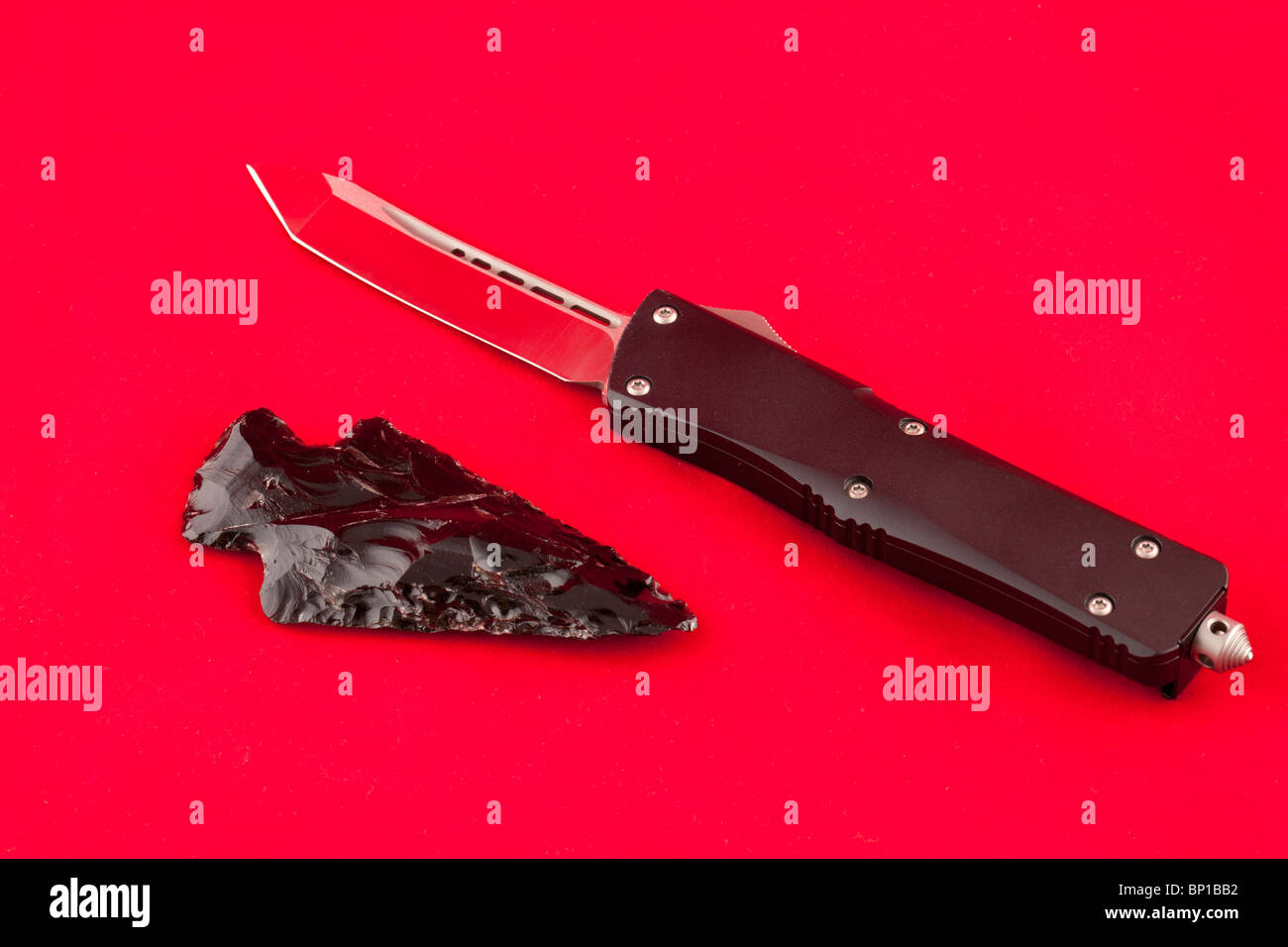 Sacrificial Knife Aztec and modern automatic knife from the U.S. Stock Photohttps://www.alamy.com/image-license-details/?v=1https://www.alamy.com/stock-photo-sacrificial-knife-aztec-and-modern-automatic-knife-from-the-us-30763686.html
Sacrificial Knife Aztec and modern automatic knife from the U.S. Stock Photohttps://www.alamy.com/image-license-details/?v=1https://www.alamy.com/stock-photo-sacrificial-knife-aztec-and-modern-automatic-knife-from-the-us-30763686.htmlRFBP1BB2–Sacrificial Knife Aztec and modern automatic knife from the U.S.
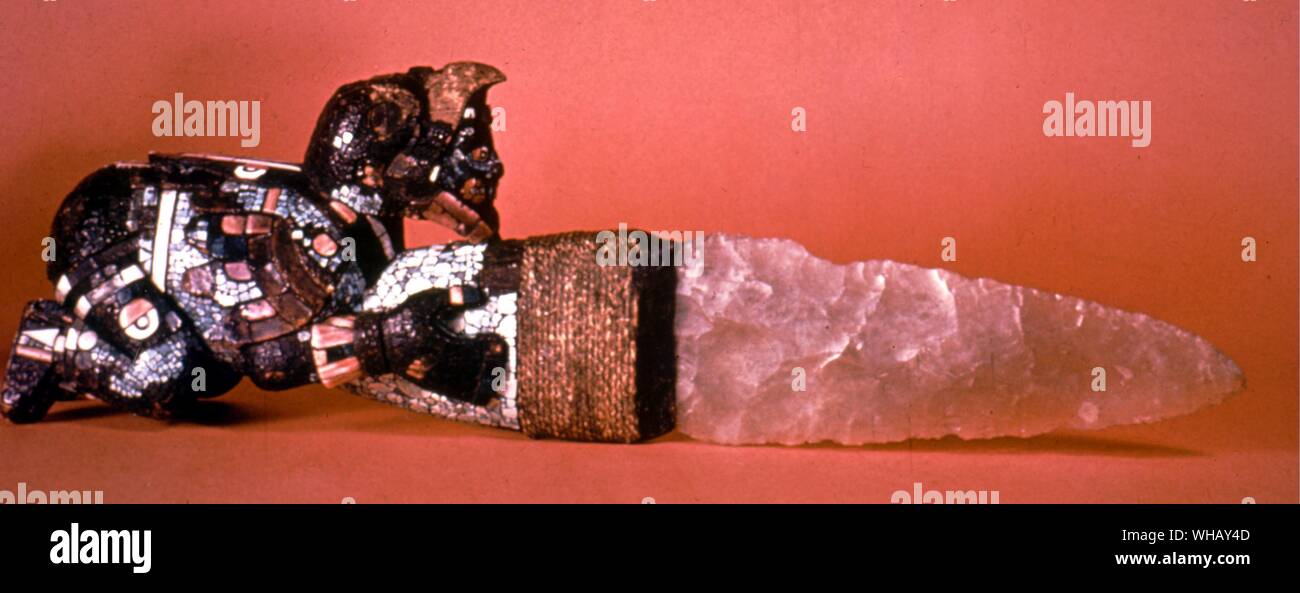 Mixtec sacrificial knife with mosaic handle. The Conquistadors by Hammond Innes, page 110. Stock Photohttps://www.alamy.com/image-license-details/?v=1https://www.alamy.com/mixtec-sacrificial-knife-with-mosaic-handle-the-conquistadors-by-hammond-innes-page-110-image268845485.html
Mixtec sacrificial knife with mosaic handle. The Conquistadors by Hammond Innes, page 110. Stock Photohttps://www.alamy.com/image-license-details/?v=1https://www.alamy.com/mixtec-sacrificial-knife-with-mosaic-handle-the-conquistadors-by-hammond-innes-page-110-image268845485.htmlRMWHAY4D–Mixtec sacrificial knife with mosaic handle. The Conquistadors by Hammond Innes, page 110.
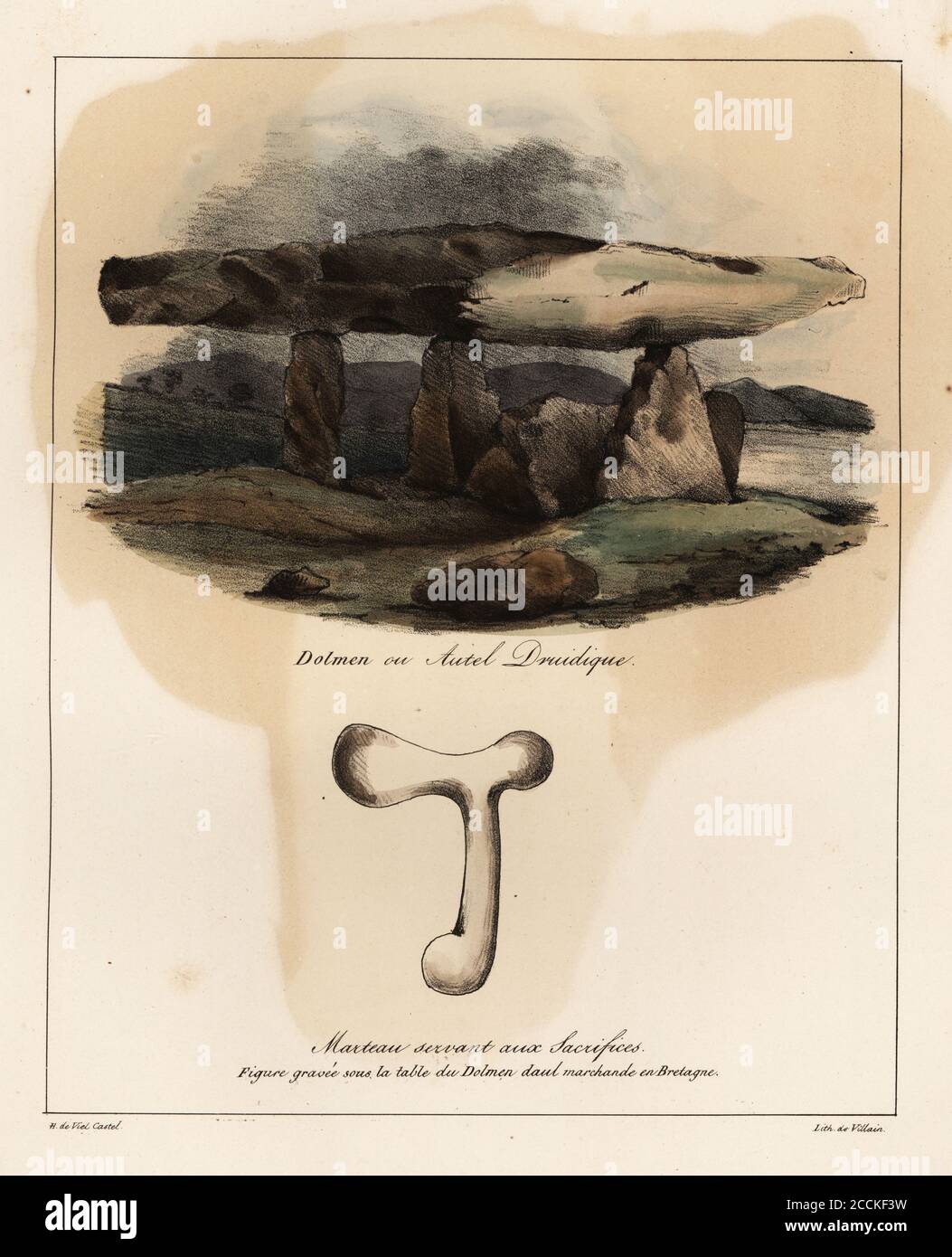 Dolmen or Druidic altar. Hammer used for sacrifice (from a figure engraved under the table of a Dolmen in Brittany). Dolmen ou Autel Druidique. Marteau servant aux sacrifices (Figure gravee sous la table du Dolmen daul marchande en Bretagne). Handcoloured lithograph by Villain after an illustration by Horace de Viel-Castel from his Collection des costumes, armes et meubles pour servir à l'histoire de la France (Collection of costumes, weapons and furniture to be used in the history of France), Treuttel & Wurtz, Bossange, 1827. Stock Photohttps://www.alamy.com/image-license-details/?v=1https://www.alamy.com/dolmen-or-druidic-altar-hammer-used-for-sacrifice-from-a-figure-engraved-under-the-table-of-a-dolmen-in-brittany-dolmen-ou-autel-druidique-marteau-servant-aux-sacrifices-figure-gravee-sous-la-table-du-dolmen-daul-marchande-en-bretagne-handcoloured-lithograph-by-villain-after-an-illustration-by-horace-de-viel-castel-from-his-collection-des-costumes-armes-et-meubles-pour-servir-lhistoire-de-la-france-collection-of-costumes-weapons-and-furniture-to-be-used-in-the-history-of-france-treuttel-wurtz-bossange-1827-image369222557.html
Dolmen or Druidic altar. Hammer used for sacrifice (from a figure engraved under the table of a Dolmen in Brittany). Dolmen ou Autel Druidique. Marteau servant aux sacrifices (Figure gravee sous la table du Dolmen daul marchande en Bretagne). Handcoloured lithograph by Villain after an illustration by Horace de Viel-Castel from his Collection des costumes, armes et meubles pour servir à l'histoire de la France (Collection of costumes, weapons and furniture to be used in the history of France), Treuttel & Wurtz, Bossange, 1827. Stock Photohttps://www.alamy.com/image-license-details/?v=1https://www.alamy.com/dolmen-or-druidic-altar-hammer-used-for-sacrifice-from-a-figure-engraved-under-the-table-of-a-dolmen-in-brittany-dolmen-ou-autel-druidique-marteau-servant-aux-sacrifices-figure-gravee-sous-la-table-du-dolmen-daul-marchande-en-bretagne-handcoloured-lithograph-by-villain-after-an-illustration-by-horace-de-viel-castel-from-his-collection-des-costumes-armes-et-meubles-pour-servir-lhistoire-de-la-france-collection-of-costumes-weapons-and-furniture-to-be-used-in-the-history-of-france-treuttel-wurtz-bossange-1827-image369222557.htmlRM2CCKF3W–Dolmen or Druidic altar. Hammer used for sacrifice (from a figure engraved under the table of a Dolmen in Brittany). Dolmen ou Autel Druidique. Marteau servant aux sacrifices (Figure gravee sous la table du Dolmen daul marchande en Bretagne). Handcoloured lithograph by Villain after an illustration by Horace de Viel-Castel from his Collection des costumes, armes et meubles pour servir à l'histoire de la France (Collection of costumes, weapons and furniture to be used in the history of France), Treuttel & Wurtz, Bossange, 1827.
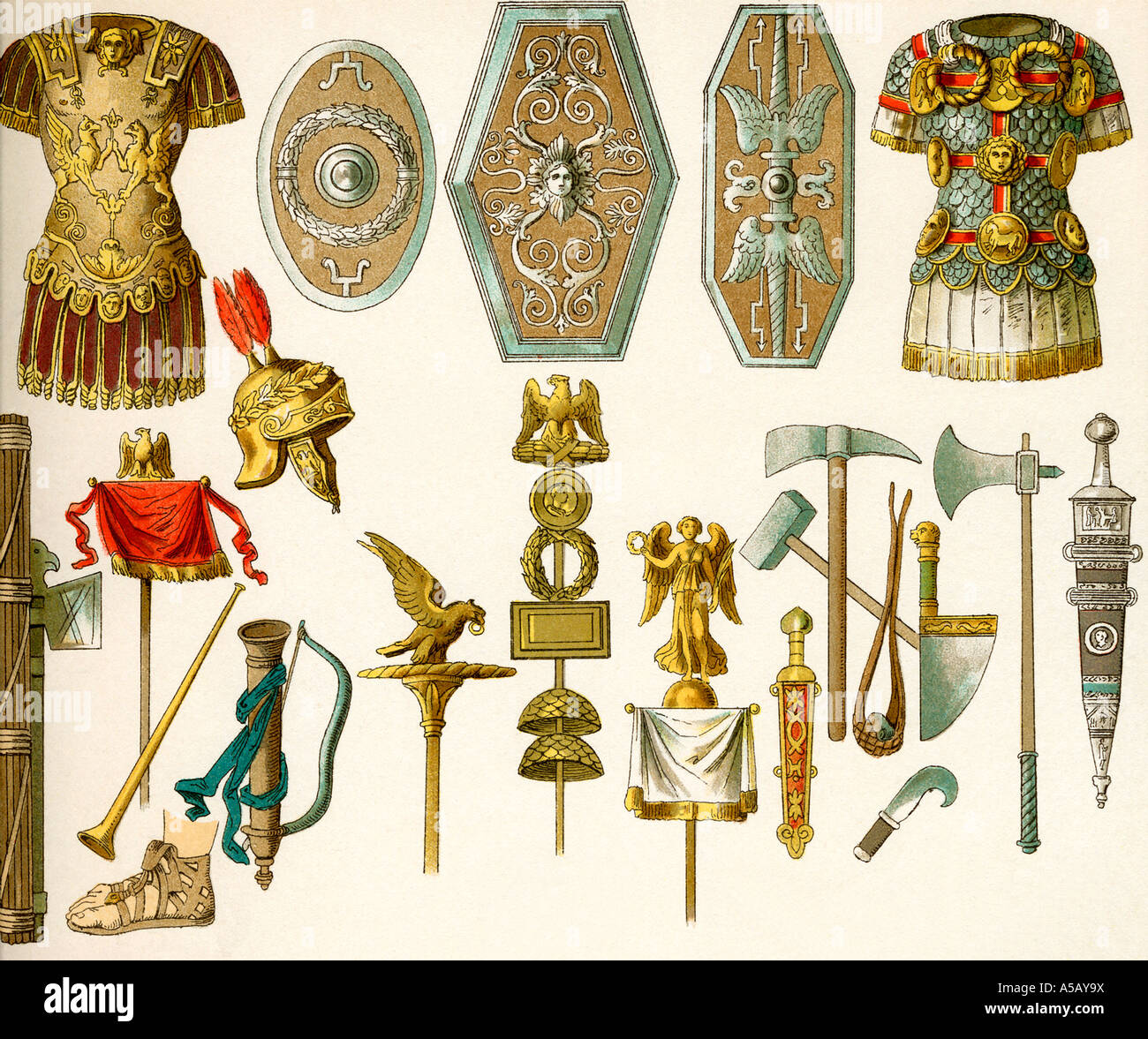 Ancient Roman weapons and armor Stock Photohttps://www.alamy.com/image-license-details/?v=1https://www.alamy.com/stock-photo-ancient-roman-weapons-and-armor-11254885.html
Ancient Roman weapons and armor Stock Photohttps://www.alamy.com/image-license-details/?v=1https://www.alamy.com/stock-photo-ancient-roman-weapons-and-armor-11254885.htmlRFA5AY9X–Ancient Roman weapons and armor
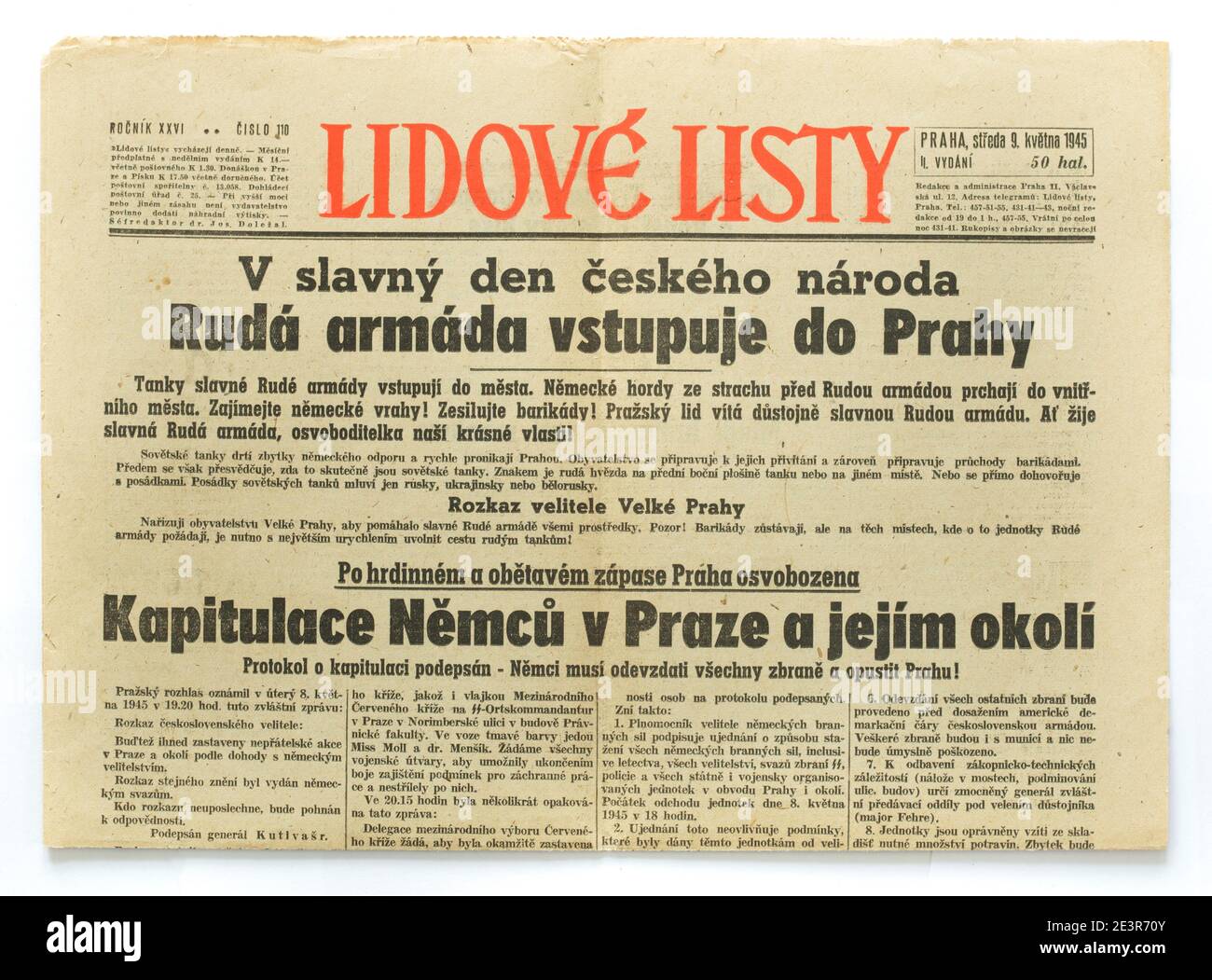 Czechoslovak newspaper 'Lidové listy' ('People Papers') issued on 9th May 1945 with announcements of the surrender of the Nazi German forces in Prague and surroundings and of the entry of the Red Army into Prague. The first line in Czech language means: In the glorious day of the Czech nation, the Red Army is entering in Prague. The second line means: Prague is liberated after the heroic and sacrificial struggle. The surrender of the Germans in Prague and surroundings. The protocol of surrender is signed. The Germans have to lay the weapons down and leave Prague! The full text of the protocol Stock Photohttps://www.alamy.com/image-license-details/?v=1https://www.alamy.com/czechoslovak-newspaper-lidov-listy-people-papers-issued-on-9th-may-1945-with-announcements-of-the-surrender-of-the-nazi-german-forces-in-prague-and-surroundings-and-of-the-entry-of-the-red-army-into-prague-the-first-line-in-czech-language-means-in-the-glorious-day-of-the-czech-nation-the-red-army-is-entering-in-prague-the-second-line-means-prague-is-liberated-after-the-heroic-and-sacrificial-struggle-the-surrender-of-the-germans-in-prague-and-surroundings-the-protocol-of-surrender-is-signed-the-germans-have-to-lay-the-weapons-down-and-leave-prague!-the-full-text-of-the-protocol-image398192843.html
Czechoslovak newspaper 'Lidové listy' ('People Papers') issued on 9th May 1945 with announcements of the surrender of the Nazi German forces in Prague and surroundings and of the entry of the Red Army into Prague. The first line in Czech language means: In the glorious day of the Czech nation, the Red Army is entering in Prague. The second line means: Prague is liberated after the heroic and sacrificial struggle. The surrender of the Germans in Prague and surroundings. The protocol of surrender is signed. The Germans have to lay the weapons down and leave Prague! The full text of the protocol Stock Photohttps://www.alamy.com/image-license-details/?v=1https://www.alamy.com/czechoslovak-newspaper-lidov-listy-people-papers-issued-on-9th-may-1945-with-announcements-of-the-surrender-of-the-nazi-german-forces-in-prague-and-surroundings-and-of-the-entry-of-the-red-army-into-prague-the-first-line-in-czech-language-means-in-the-glorious-day-of-the-czech-nation-the-red-army-is-entering-in-prague-the-second-line-means-prague-is-liberated-after-the-heroic-and-sacrificial-struggle-the-surrender-of-the-germans-in-prague-and-surroundings-the-protocol-of-surrender-is-signed-the-germans-have-to-lay-the-weapons-down-and-leave-prague!-the-full-text-of-the-protocol-image398192843.htmlRM2E3R70Y–Czechoslovak newspaper 'Lidové listy' ('People Papers') issued on 9th May 1945 with announcements of the surrender of the Nazi German forces in Prague and surroundings and of the entry of the Red Army into Prague. The first line in Czech language means: In the glorious day of the Czech nation, the Red Army is entering in Prague. The second line means: Prague is liberated after the heroic and sacrificial struggle. The surrender of the Germans in Prague and surroundings. The protocol of surrender is signed. The Germans have to lay the weapons down and leave Prague! The full text of the protocol
 Tierra del fuego archipelago: primitive tools and weapon of bone Stock Photohttps://www.alamy.com/image-license-details/?v=1https://www.alamy.com/tierra-del-fuego-archipelago-primitive-tools-and-weapon-of-bone-image367654288.html
Tierra del fuego archipelago: primitive tools and weapon of bone Stock Photohttps://www.alamy.com/image-license-details/?v=1https://www.alamy.com/tierra-del-fuego-archipelago-primitive-tools-and-weapon-of-bone-image367654288.htmlRF2CA42P8–Tierra del fuego archipelago: primitive tools and weapon of bone
 Dolmen or Druidic altar. Hammer used for sacrifice (from a figure engraved under the table of a Dolmen in Brittany). Dolmen ou Autel Druidique. Marteau servant aux sacrifices (Figure gravee sous la table du Dolmen daul marchande en Bretagne). Handcoloured lithograph by Villain after an illustration by Horace de Viel-Castel from his Collection des costumes, armes et meubles pour servir à l'histoire de la France (Collection of costumes, weapons and furniture to be used in the history of France), Treuttel & Wurtz, Bossange, 1827. Stock Photohttps://www.alamy.com/image-license-details/?v=1https://www.alamy.com/dolmen-or-druidic-altar-hammer-used-for-sacrifice-from-a-figure-engraved-under-the-table-of-a-dolmen-in-brittany-dolmen-ou-autel-druidique-marteau-servant-aux-sacrifices-figure-gravee-sous-la-table-du-dolmen-daul-marchande-en-bretagne-handcoloured-lithograph-by-villain-after-an-illustration-by-horace-de-viel-castel-from-his-collection-des-costumes-armes-et-meubles-pour-servir-lhistoire-de-la-france-collection-of-costumes-weapons-and-furniture-to-be-used-in-the-history-of-france-treuttel-wurtz-bossange-1827-image571836761.html
Dolmen or Druidic altar. Hammer used for sacrifice (from a figure engraved under the table of a Dolmen in Brittany). Dolmen ou Autel Druidique. Marteau servant aux sacrifices (Figure gravee sous la table du Dolmen daul marchande en Bretagne). Handcoloured lithograph by Villain after an illustration by Horace de Viel-Castel from his Collection des costumes, armes et meubles pour servir à l'histoire de la France (Collection of costumes, weapons and furniture to be used in the history of France), Treuttel & Wurtz, Bossange, 1827. Stock Photohttps://www.alamy.com/image-license-details/?v=1https://www.alamy.com/dolmen-or-druidic-altar-hammer-used-for-sacrifice-from-a-figure-engraved-under-the-table-of-a-dolmen-in-brittany-dolmen-ou-autel-druidique-marteau-servant-aux-sacrifices-figure-gravee-sous-la-table-du-dolmen-daul-marchande-en-bretagne-handcoloured-lithograph-by-villain-after-an-illustration-by-horace-de-viel-castel-from-his-collection-des-costumes-armes-et-meubles-pour-servir-lhistoire-de-la-france-collection-of-costumes-weapons-and-furniture-to-be-used-in-the-history-of-france-treuttel-wurtz-bossange-1827-image571836761.htmlRM2T69BHD–Dolmen or Druidic altar. Hammer used for sacrifice (from a figure engraved under the table of a Dolmen in Brittany). Dolmen ou Autel Druidique. Marteau servant aux sacrifices (Figure gravee sous la table du Dolmen daul marchande en Bretagne). Handcoloured lithograph by Villain after an illustration by Horace de Viel-Castel from his Collection des costumes, armes et meubles pour servir à l'histoire de la France (Collection of costumes, weapons and furniture to be used in the history of France), Treuttel & Wurtz, Bossange, 1827.
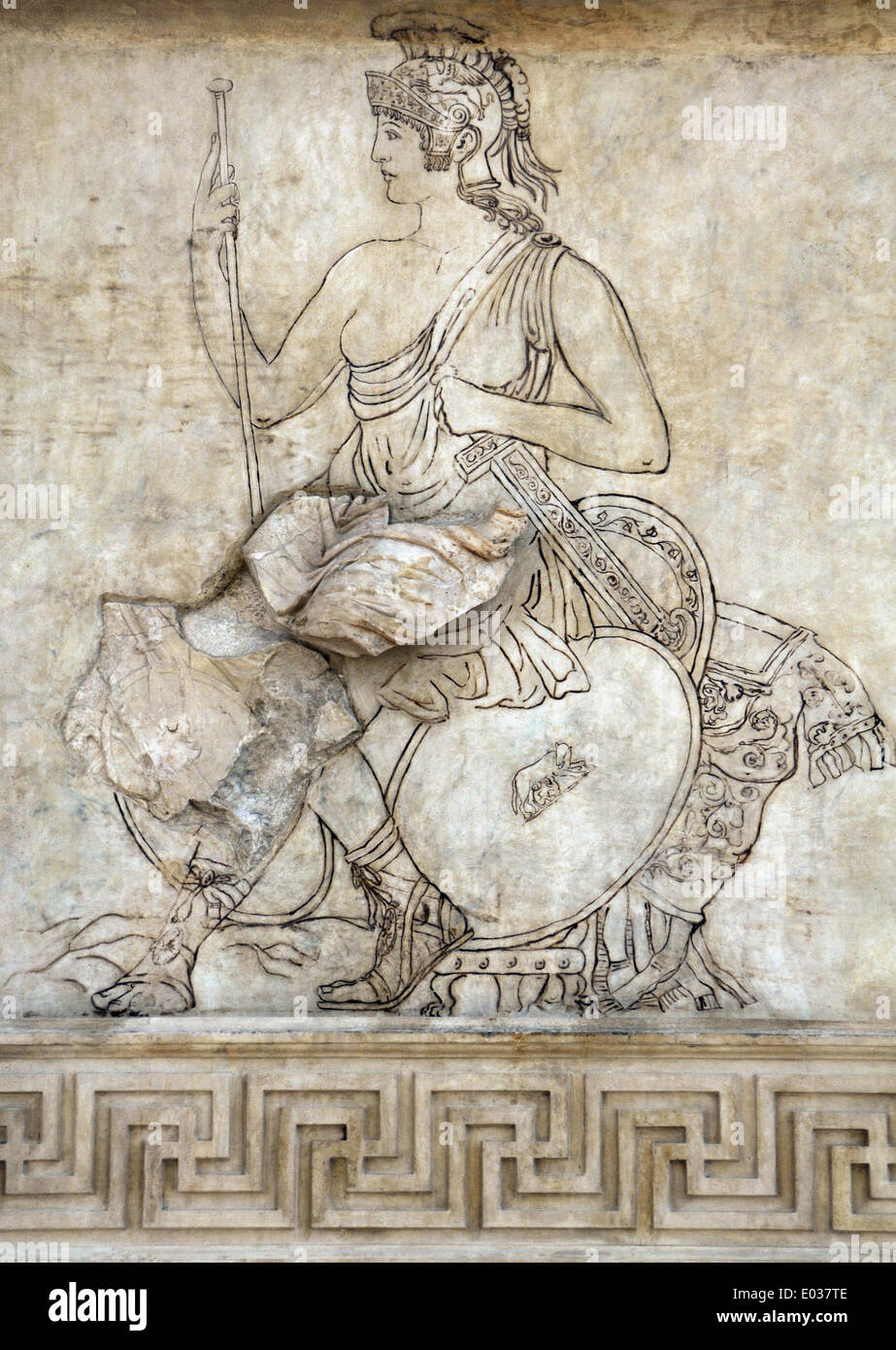 Roman Art. Italy. Ara Pacis Augustae. Dated 13th century BC. Figure of the goddess Roma, sitting on a pile of trophy weapons. Stock Photohttps://www.alamy.com/image-license-details/?v=1https://www.alamy.com/roman-art-italy-ara-pacis-augustae-dated-13th-century-bc-figure-of-image68913502.html
Roman Art. Italy. Ara Pacis Augustae. Dated 13th century BC. Figure of the goddess Roma, sitting on a pile of trophy weapons. Stock Photohttps://www.alamy.com/image-license-details/?v=1https://www.alamy.com/roman-art-italy-ara-pacis-augustae-dated-13th-century-bc-figure-of-image68913502.htmlRME037TE–Roman Art. Italy. Ara Pacis Augustae. Dated 13th century BC. Figure of the goddess Roma, sitting on a pile of trophy weapons.
 Sacrificial Axe 18th–19th century Indian, Coorg. Sacrificial Axe. Indian, Coorg. 18th–19th century. Steel, wood. Shafted Weapons Stock Photohttps://www.alamy.com/image-license-details/?v=1https://www.alamy.com/sacrificial-axe-18th19th-century-indian-coorg-sacrificial-axe-indian-coorg-18th19th-century-steel-wood-shafted-weapons-image457870068.html
Sacrificial Axe 18th–19th century Indian, Coorg. Sacrificial Axe. Indian, Coorg. 18th–19th century. Steel, wood. Shafted Weapons Stock Photohttps://www.alamy.com/image-license-details/?v=1https://www.alamy.com/sacrificial-axe-18th19th-century-indian-coorg-sacrificial-axe-indian-coorg-18th19th-century-steel-wood-shafted-weapons-image457870068.htmlRM2HGWNXC–Sacrificial Axe 18th–19th century Indian, Coorg. Sacrificial Axe. Indian, Coorg. 18th–19th century. Steel, wood. Shafted Weapons
![Fan weapons; 1. knife; 2. sacrificial knife and battle-axe; 3. shield and spear. The history of mankind / Trans from the second German edited by A. J. Butler. v. 3, 1898. [S.l.] : Macmillan, 1896-1898. Source: 572*3343* vol III, f.104. Language: English. Author: Ratzell, Friedrich. Stock Photo Fan weapons; 1. knife; 2. sacrificial knife and battle-axe; 3. shield and spear. The history of mankind / Trans from the second German edited by A. J. Butler. v. 3, 1898. [S.l.] : Macmillan, 1896-1898. Source: 572*3343* vol III, f.104. Language: English. Author: Ratzell, Friedrich. Stock Photo](https://c8.alamy.com/comp/R54J98/fan-weapons-1-knife-2-sacrificial-knife-and-battle-axe-3-shield-and-spear-the-history-of-mankind-trans-from-the-second-german-edited-by-a-j-butler-v-3-1898-sl-macmillan-1896-1898-source-5723343-vol-iii-f104-language-english-author-ratzell-friedrich-R54J98.jpg) Fan weapons; 1. knife; 2. sacrificial knife and battle-axe; 3. shield and spear. The history of mankind / Trans from the second German edited by A. J. Butler. v. 3, 1898. [S.l.] : Macmillan, 1896-1898. Source: 572*3343* vol III, f.104. Language: English. Author: Ratzell, Friedrich. Stock Photohttps://www.alamy.com/image-license-details/?v=1https://www.alamy.com/fan-weapons-1-knife-2-sacrificial-knife-and-battle-axe-3-shield-and-spear-the-history-of-mankind-trans-from-the-second-german-edited-by-a-j-butler-v-3-1898-sl-macmillan-1896-1898-source-5723343-vol-iii-f104-language-english-author-ratzell-friedrich-image226910244.html
Fan weapons; 1. knife; 2. sacrificial knife and battle-axe; 3. shield and spear. The history of mankind / Trans from the second German edited by A. J. Butler. v. 3, 1898. [S.l.] : Macmillan, 1896-1898. Source: 572*3343* vol III, f.104. Language: English. Author: Ratzell, Friedrich. Stock Photohttps://www.alamy.com/image-license-details/?v=1https://www.alamy.com/fan-weapons-1-knife-2-sacrificial-knife-and-battle-axe-3-shield-and-spear-the-history-of-mankind-trans-from-the-second-german-edited-by-a-j-butler-v-3-1898-sl-macmillan-1896-1898-source-5723343-vol-iii-f104-language-english-author-ratzell-friedrich-image226910244.htmlRMR54J98–Fan weapons; 1. knife; 2. sacrificial knife and battle-axe; 3. shield and spear. The history of mankind / Trans from the second German edited by A. J. Butler. v. 3, 1898. [S.l.] : Macmillan, 1896-1898. Source: 572*3343* vol III, f.104. Language: English. Author: Ratzell, Friedrich.
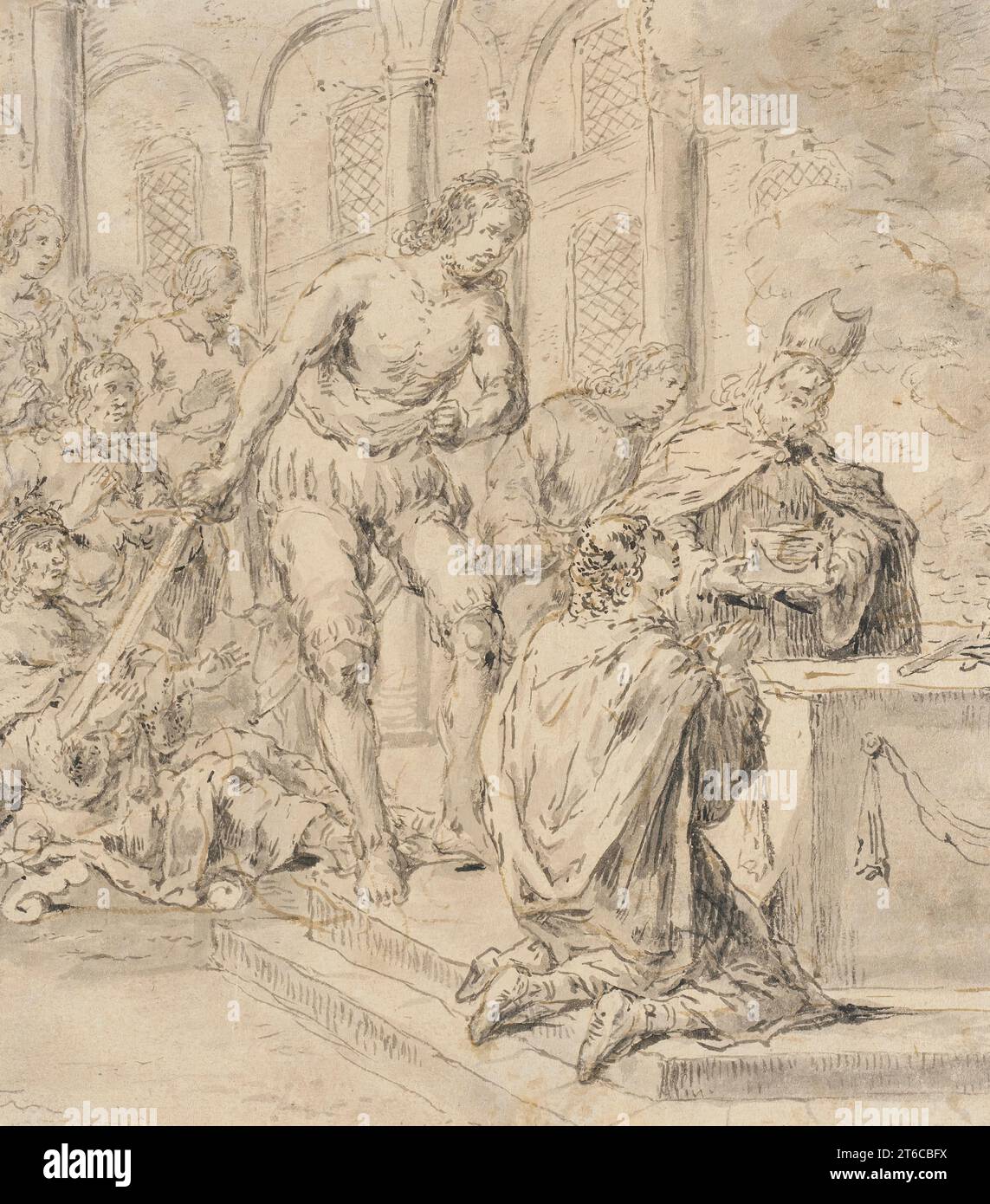 Sacrificial Scene, between 1596 and 1674. Stock Photohttps://www.alamy.com/image-license-details/?v=1https://www.alamy.com/sacrificial-scene-between-1596-and-1674-image571902574.html
Sacrificial Scene, between 1596 and 1674. Stock Photohttps://www.alamy.com/image-license-details/?v=1https://www.alamy.com/sacrificial-scene-between-1596-and-1674-image571902574.htmlRM2T6CBFX–Sacrificial Scene, between 1596 and 1674.
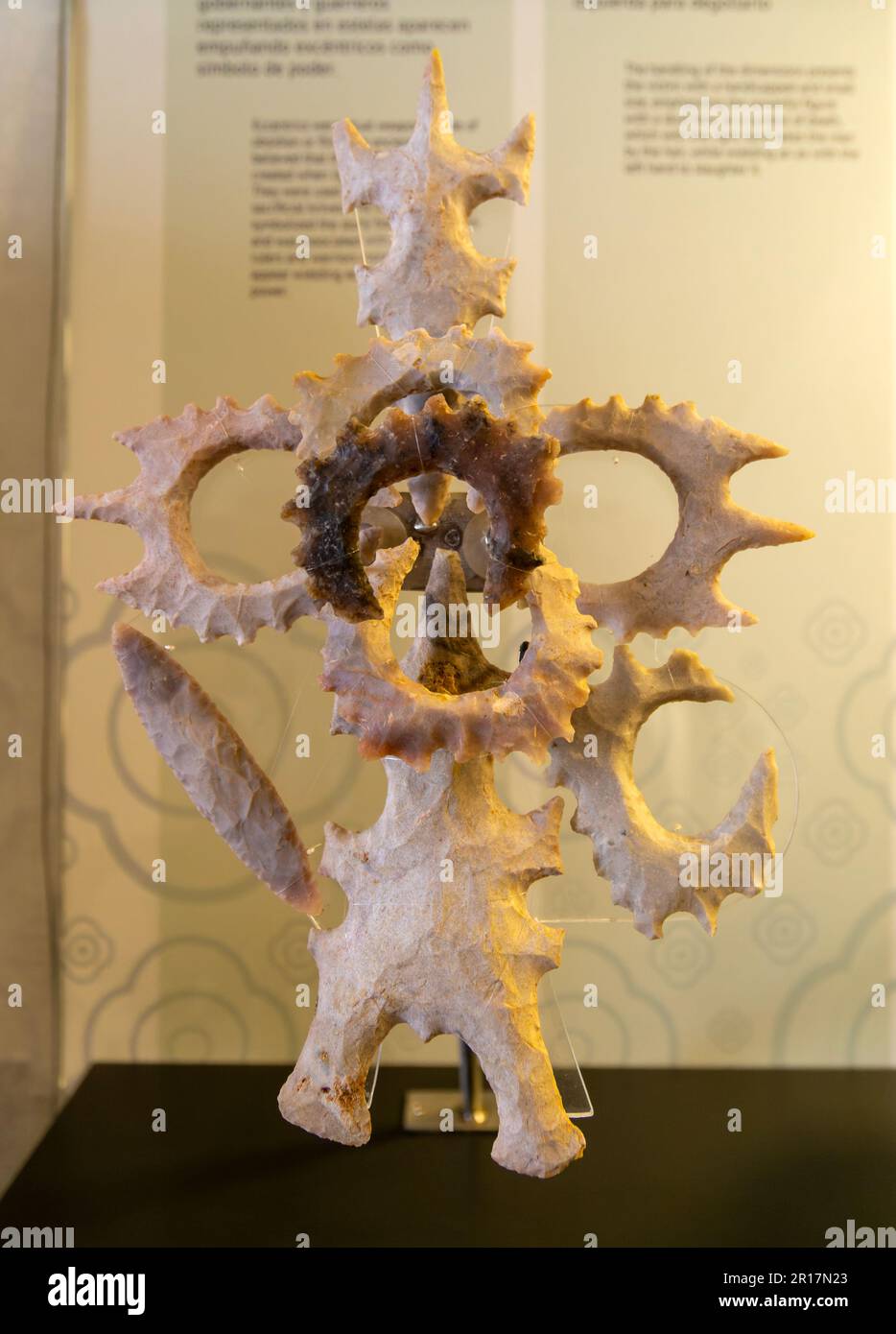 Ritual sacrificial knives in flint and obsidian, Mayan archaeological museum, Fort San Jose, Campeche, Mexico Stock Photohttps://www.alamy.com/image-license-details/?v=1https://www.alamy.com/ritual-sacrificial-knives-in-flint-and-obsidian-mayan-archaeological-museum-fort-san-jose-campeche-mexico-image551516619.html
Ritual sacrificial knives in flint and obsidian, Mayan archaeological museum, Fort San Jose, Campeche, Mexico Stock Photohttps://www.alamy.com/image-license-details/?v=1https://www.alamy.com/ritual-sacrificial-knives-in-flint-and-obsidian-mayan-archaeological-museum-fort-san-jose-campeche-mexico-image551516619.htmlRM2R17N23–Ritual sacrificial knives in flint and obsidian, Mayan archaeological museum, Fort San Jose, Campeche, Mexico
 Sacrificial victims threw down from royal palace terrace, Dahomey, Central Africa, Old 19th century engraved illustration, Le Tour du Monde 1863 Stock Photohttps://www.alamy.com/image-license-details/?v=1https://www.alamy.com/sacrificial-victims-threw-down-from-royal-palace-terrace-dahomey-central-africa-old-19th-century-engraved-illustration-le-tour-du-monde-1863-image357323531.html
Sacrificial victims threw down from royal palace terrace, Dahomey, Central Africa, Old 19th century engraved illustration, Le Tour du Monde 1863 Stock Photohttps://www.alamy.com/image-license-details/?v=1https://www.alamy.com/sacrificial-victims-threw-down-from-royal-palace-terrace-dahomey-central-africa-old-19th-century-engraved-illustration-le-tour-du-monde-1863-image357323531.htmlRM2BN9DPK–Sacrificial victims threw down from royal palace terrace, Dahomey, Central Africa, Old 19th century engraved illustration, Le Tour du Monde 1863
 The typical weapons used by the Incas, including the sling and the tremendous Macuahuitl Stock Photohttps://www.alamy.com/image-license-details/?v=1https://www.alamy.com/the-typical-weapons-used-by-the-incas-including-the-sling-and-the-tremendous-macuahuitl-image486771188.html
The typical weapons used by the Incas, including the sling and the tremendous Macuahuitl Stock Photohttps://www.alamy.com/image-license-details/?v=1https://www.alamy.com/the-typical-weapons-used-by-the-incas-including-the-sling-and-the-tremendous-macuahuitl-image486771188.htmlRF2K7X9H8–The typical weapons used by the Incas, including the sling and the tremendous Macuahuitl
 The decorative periods . din a higher sense it indicated immortality. The palm was asymbol of victory. It is easy to understand howthe vessels of religious rites passedinto the decoration of religiousedifices. In the antique style the ALTARS, TRIPODS, CANDELABRA,SACRIFICIAL AXES and SPRINKLERS were introduced naturally. In the Gothic Period the sym-bol of the CROSS, the marks ofPRIESTLY dignity, the suggestionof the PASSION, became part of thedecoration. It was the custom of theGreeks to hang upon the trunks oftrees the weapons which the flyingenemy had left behind.These tokens of victory were Stock Photohttps://www.alamy.com/image-license-details/?v=1https://www.alamy.com/the-decorative-periods-din-a-higher-sense-it-indicated-immortality-the-palm-was-asymbol-of-victory-it-is-easy-to-understand-howthe-vessels-of-religious-rites-passedinto-the-decoration-of-religiousedifices-in-the-antique-style-the-altars-tripods-candelabrasacrificial-axes-and-sprinklers-were-introduced-naturally-in-the-gothic-period-the-sym-bol-of-the-cross-the-marks-ofpriestly-dignity-the-suggestionof-the-passion-became-part-of-thedecoration-it-was-the-custom-of-thegreeks-to-hang-upon-the-trunks-oftrees-the-weapons-which-the-flyingenemy-had-left-behindthese-tokens-of-victory-were-image338199433.html
The decorative periods . din a higher sense it indicated immortality. The palm was asymbol of victory. It is easy to understand howthe vessels of religious rites passedinto the decoration of religiousedifices. In the antique style the ALTARS, TRIPODS, CANDELABRA,SACRIFICIAL AXES and SPRINKLERS were introduced naturally. In the Gothic Period the sym-bol of the CROSS, the marks ofPRIESTLY dignity, the suggestionof the PASSION, became part of thedecoration. It was the custom of theGreeks to hang upon the trunks oftrees the weapons which the flyingenemy had left behind.These tokens of victory were Stock Photohttps://www.alamy.com/image-license-details/?v=1https://www.alamy.com/the-decorative-periods-din-a-higher-sense-it-indicated-immortality-the-palm-was-asymbol-of-victory-it-is-easy-to-understand-howthe-vessels-of-religious-rites-passedinto-the-decoration-of-religiousedifices-in-the-antique-style-the-altars-tripods-candelabrasacrificial-axes-and-sprinklers-were-introduced-naturally-in-the-gothic-period-the-sym-bol-of-the-cross-the-marks-ofpriestly-dignity-the-suggestionof-the-passion-became-part-of-thedecoration-it-was-the-custom-of-thegreeks-to-hang-upon-the-trunks-oftrees-the-weapons-which-the-flyingenemy-had-left-behindthese-tokens-of-victory-were-image338199433.htmlRM2AJ68R5–The decorative periods . din a higher sense it indicated immortality. The palm was asymbol of victory. It is easy to understand howthe vessels of religious rites passedinto the decoration of religiousedifices. In the antique style the ALTARS, TRIPODS, CANDELABRA,SACRIFICIAL AXES and SPRINKLERS were introduced naturally. In the Gothic Period the sym-bol of the CROSS, the marks ofPRIESTLY dignity, the suggestionof the PASSION, became part of thedecoration. It was the custom of theGreeks to hang upon the trunks oftrees the weapons which the flyingenemy had left behind.These tokens of victory were
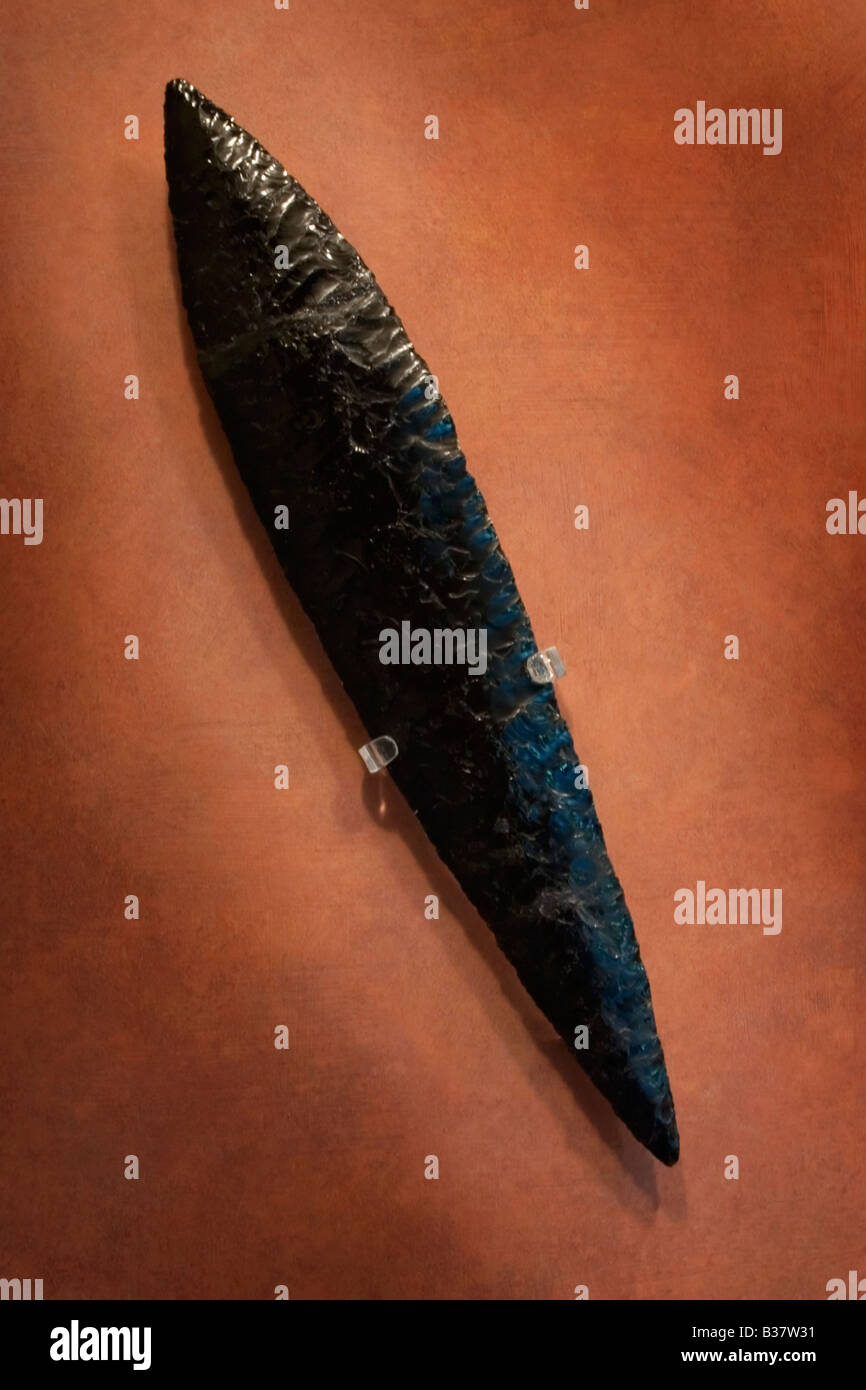 Aztec obsidian blade at the National Museum of Anthropology in Mexico City. Stock Photohttps://www.alamy.com/image-license-details/?v=1https://www.alamy.com/stock-photo-aztec-obsidian-blade-at-the-national-museum-of-anthropology-in-mexico-19227685.html
Aztec obsidian blade at the National Museum of Anthropology in Mexico City. Stock Photohttps://www.alamy.com/image-license-details/?v=1https://www.alamy.com/stock-photo-aztec-obsidian-blade-at-the-national-museum-of-anthropology-in-mexico-19227685.htmlRMB37W31–Aztec obsidian blade at the National Museum of Anthropology in Mexico City.
 Ceremonial knife or Tumi, ornamented with llama head. Inca Culture. Late Period, 1400 AC. Museum of the Americas, Madrid Stock Photohttps://www.alamy.com/image-license-details/?v=1https://www.alamy.com/ceremonial-knife-or-tumi-ornamented-with-llama-head-inca-culture-late-period-1400-ac-museum-of-the-americas-madrid-image414230051.html
Ceremonial knife or Tumi, ornamented with llama head. Inca Culture. Late Period, 1400 AC. Museum of the Americas, Madrid Stock Photohttps://www.alamy.com/image-license-details/?v=1https://www.alamy.com/ceremonial-knife-or-tumi-ornamented-with-llama-head-inca-culture-late-period-1400-ac-museum-of-the-americas-madrid-image414230051.htmlRF2F1WPJB–Ceremonial knife or Tumi, ornamented with llama head. Inca Culture. Late Period, 1400 AC. Museum of the Americas, Madrid
 Battle of Malplaquet, 1709, Map of the battle of Malplaquet between the Allies and the French, September 11, 1709. Print consisting of two sheets stuck together. Above the map of the battle, below the order of battle of the Allied troops. On the left a monument decorated with banners and weapons, in the foreground the Victory with portraits of the Prince of Savoy, the Duke of Marlborough and the Earl of Tilly. On the right Mars and Hercules at a temple with two sacrificial women, on the ground the defeated enemies., print, print maker: anonymous, print maker: Jan van Vianen, (possibly Stock Photohttps://www.alamy.com/image-license-details/?v=1https://www.alamy.com/battle-of-malplaquet-1709-map-of-the-battle-of-malplaquet-between-the-allies-and-the-french-september-11-1709-print-consisting-of-two-sheets-stuck-together-above-the-map-of-the-battle-below-the-order-of-battle-of-the-allied-troops-on-the-left-a-monument-decorated-with-banners-and-weapons-in-the-foreground-the-victory-with-portraits-of-the-prince-of-savoy-the-duke-of-marlborough-and-the-earl-of-tilly-on-the-right-mars-and-hercules-at-a-temple-with-two-sacrificial-women-on-the-ground-the-defeated-enemies-print-print-maker-anonymous-print-maker-jan-van-vianen-possibly-image606631166.html
Battle of Malplaquet, 1709, Map of the battle of Malplaquet between the Allies and the French, September 11, 1709. Print consisting of two sheets stuck together. Above the map of the battle, below the order of battle of the Allied troops. On the left a monument decorated with banners and weapons, in the foreground the Victory with portraits of the Prince of Savoy, the Duke of Marlborough and the Earl of Tilly. On the right Mars and Hercules at a temple with two sacrificial women, on the ground the defeated enemies., print, print maker: anonymous, print maker: Jan van Vianen, (possibly Stock Photohttps://www.alamy.com/image-license-details/?v=1https://www.alamy.com/battle-of-malplaquet-1709-map-of-the-battle-of-malplaquet-between-the-allies-and-the-french-september-11-1709-print-consisting-of-two-sheets-stuck-together-above-the-map-of-the-battle-below-the-order-of-battle-of-the-allied-troops-on-the-left-a-monument-decorated-with-banners-and-weapons-in-the-foreground-the-victory-with-portraits-of-the-prince-of-savoy-the-duke-of-marlborough-and-the-earl-of-tilly-on-the-right-mars-and-hercules-at-a-temple-with-two-sacrificial-women-on-the-ground-the-defeated-enemies-print-print-maker-anonymous-print-maker-jan-van-vianen-possibly-image606631166.htmlRM2X6XC6P–Battle of Malplaquet, 1709, Map of the battle of Malplaquet between the Allies and the French, September 11, 1709. Print consisting of two sheets stuck together. Above the map of the battle, below the order of battle of the Allied troops. On the left a monument decorated with banners and weapons, in the foreground the Victory with portraits of the Prince of Savoy, the Duke of Marlborough and the Earl of Tilly. On the right Mars and Hercules at a temple with two sacrificial women, on the ground the defeated enemies., print, print maker: anonymous, print maker: Jan van Vianen, (possibly
 Statues of Confucian sages in the Wen Temple in the Ancient City of Pingyao, Shanxi Province, China Stock Photohttps://www.alamy.com/image-license-details/?v=1https://www.alamy.com/statues-of-confucian-sages-in-the-wen-temple-in-the-ancient-city-of-pingyao-shanxi-province-china-image248417195.html
Statues of Confucian sages in the Wen Temple in the Ancient City of Pingyao, Shanxi Province, China Stock Photohttps://www.alamy.com/image-license-details/?v=1https://www.alamy.com/statues-of-confucian-sages-in-the-wen-temple-in-the-ancient-city-of-pingyao-shanxi-province-china-image248417195.htmlRFTC4AJK–Statues of Confucian sages in the Wen Temple in the Ancient City of Pingyao, Shanxi Province, China
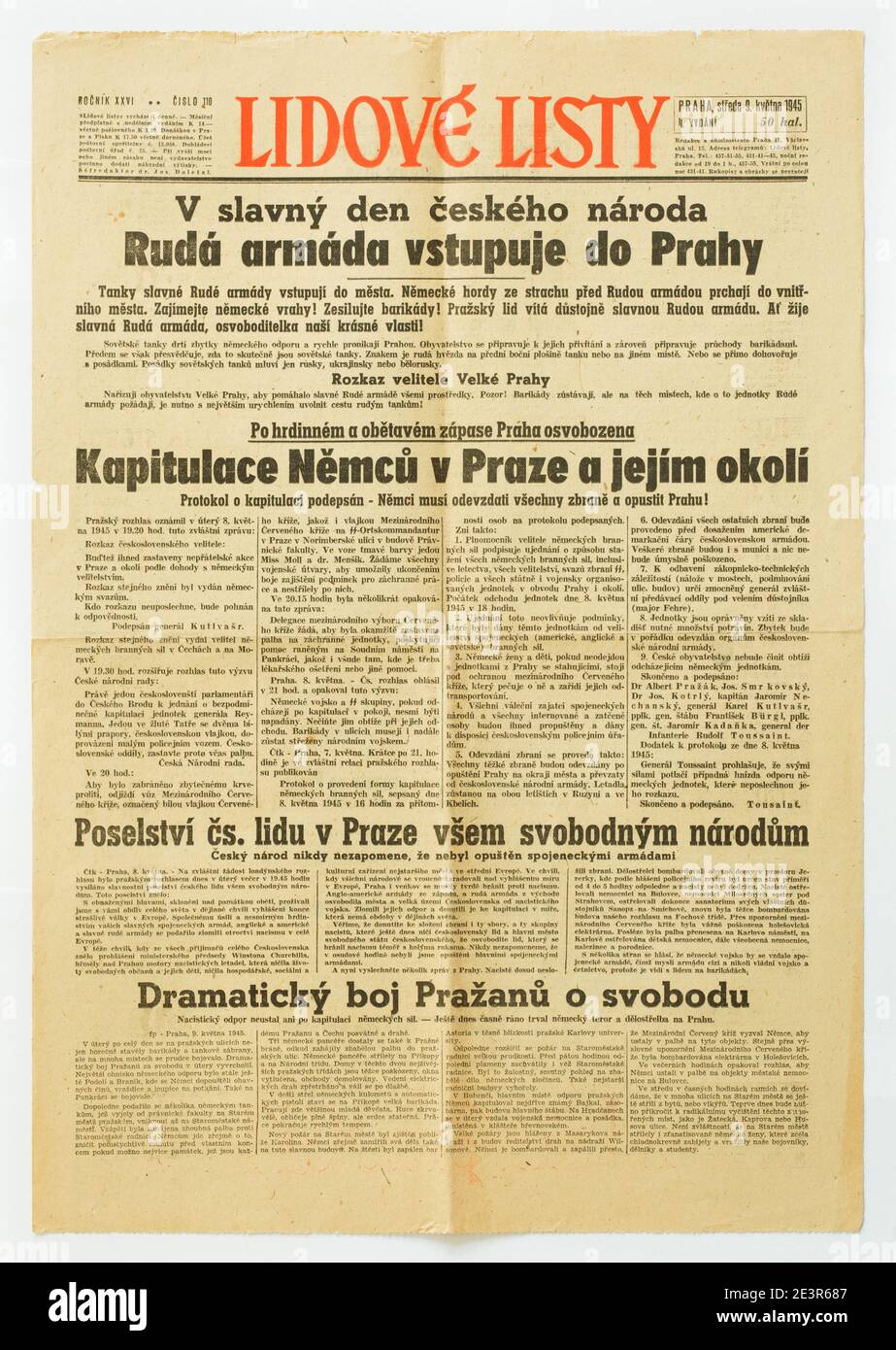 Czechoslovak newspaper 'Lidové listy' ('People Papers') issued on 9th May 1945 with announcements of the surrender of the Nazi German forces in Prague and surroundings and of the entry of the Red Army into Prague. The first line in Czech language means: In the glorious day of the Czech nation, the Red Army is entering in Prague. The second line means: Prague is liberated after the heroic and sacrificial struggle. The surrender of the Germans in Prague and surroundings. The protocol of surrender is signed. The Germans have to lay the weapons down and leave Prague! The full text of the protocol Stock Photohttps://www.alamy.com/image-license-details/?v=1https://www.alamy.com/czechoslovak-newspaper-lidov-listy-people-papers-issued-on-9th-may-1945-with-announcements-of-the-surrender-of-the-nazi-german-forces-in-prague-and-surroundings-and-of-the-entry-of-the-red-army-into-prague-the-first-line-in-czech-language-means-in-the-glorious-day-of-the-czech-nation-the-red-army-is-entering-in-prague-the-second-line-means-prague-is-liberated-after-the-heroic-and-sacrificial-struggle-the-surrender-of-the-germans-in-prague-and-surroundings-the-protocol-of-surrender-is-signed-the-germans-have-to-lay-the-weapons-down-and-leave-prague!-the-full-text-of-the-protocol-image398192263.html
Czechoslovak newspaper 'Lidové listy' ('People Papers') issued on 9th May 1945 with announcements of the surrender of the Nazi German forces in Prague and surroundings and of the entry of the Red Army into Prague. The first line in Czech language means: In the glorious day of the Czech nation, the Red Army is entering in Prague. The second line means: Prague is liberated after the heroic and sacrificial struggle. The surrender of the Germans in Prague and surroundings. The protocol of surrender is signed. The Germans have to lay the weapons down and leave Prague! The full text of the protocol Stock Photohttps://www.alamy.com/image-license-details/?v=1https://www.alamy.com/czechoslovak-newspaper-lidov-listy-people-papers-issued-on-9th-may-1945-with-announcements-of-the-surrender-of-the-nazi-german-forces-in-prague-and-surroundings-and-of-the-entry-of-the-red-army-into-prague-the-first-line-in-czech-language-means-in-the-glorious-day-of-the-czech-nation-the-red-army-is-entering-in-prague-the-second-line-means-prague-is-liberated-after-the-heroic-and-sacrificial-struggle-the-surrender-of-the-germans-in-prague-and-surroundings-the-protocol-of-surrender-is-signed-the-germans-have-to-lay-the-weapons-down-and-leave-prague!-the-full-text-of-the-protocol-image398192263.htmlRM2E3R687–Czechoslovak newspaper 'Lidové listy' ('People Papers') issued on 9th May 1945 with announcements of the surrender of the Nazi German forces in Prague and surroundings and of the entry of the Red Army into Prague. The first line in Czech language means: In the glorious day of the Czech nation, the Red Army is entering in Prague. The second line means: Prague is liberated after the heroic and sacrificial struggle. The surrender of the Germans in Prague and surroundings. The protocol of surrender is signed. The Germans have to lay the weapons down and leave Prague! The full text of the protocol
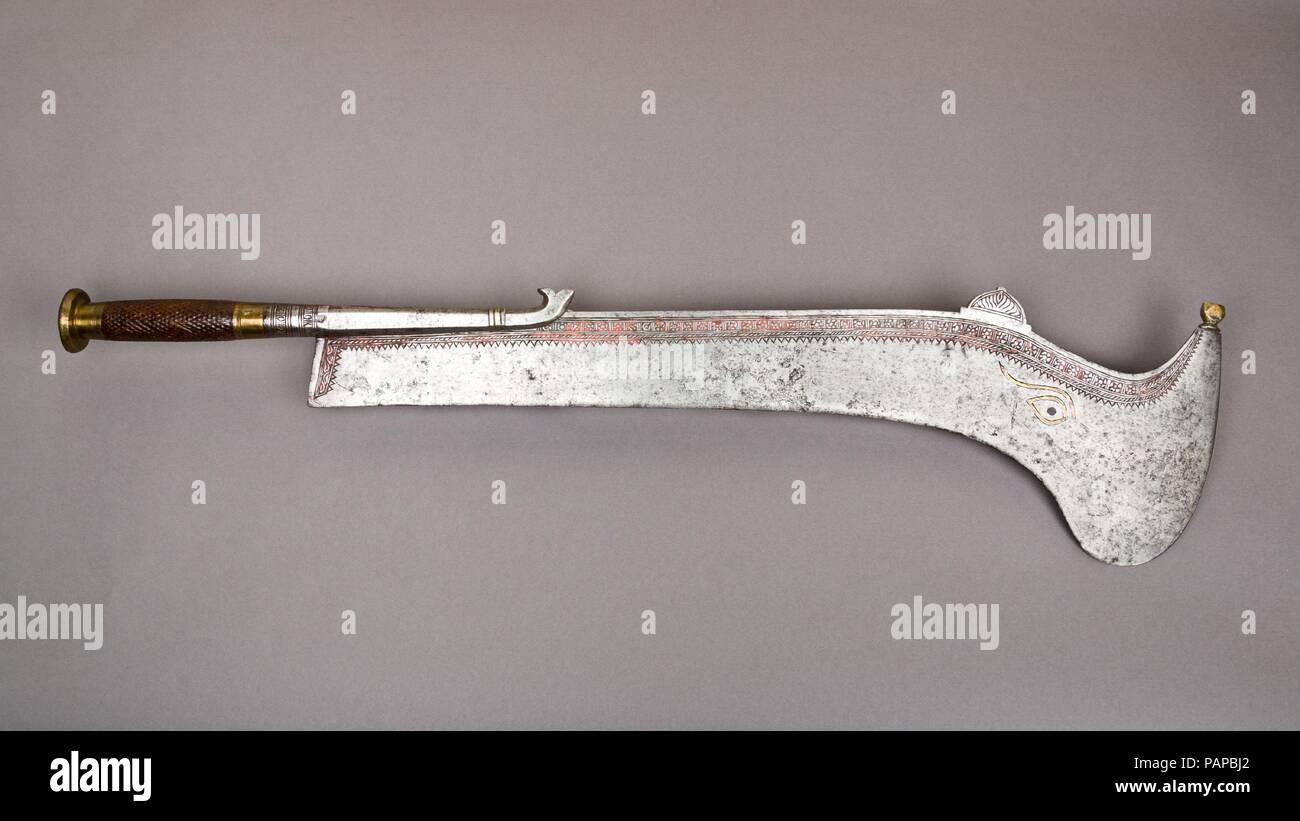 Sacrificial Sword (Ramdao). Culture: Indian, Bengal (?) or Nepalese. Dimensions: L. 35 1/2 in. (90.2 cm). Date: 19th century. Museum: Metropolitan Museum of Art, New York, USA. Stock Photohttps://www.alamy.com/image-license-details/?v=1https://www.alamy.com/sacrificial-sword-ramdao-culture-indian-bengal-or-nepalese-dimensions-l-35-12-in-902-cm-date-19th-century-museum-metropolitan-museum-of-art-new-york-usa-image213163050.html
Sacrificial Sword (Ramdao). Culture: Indian, Bengal (?) or Nepalese. Dimensions: L. 35 1/2 in. (90.2 cm). Date: 19th century. Museum: Metropolitan Museum of Art, New York, USA. Stock Photohttps://www.alamy.com/image-license-details/?v=1https://www.alamy.com/sacrificial-sword-ramdao-culture-indian-bengal-or-nepalese-dimensions-l-35-12-in-902-cm-date-19th-century-museum-metropolitan-museum-of-art-new-york-usa-image213163050.htmlRMPAPBJ2–Sacrificial Sword (Ramdao). Culture: Indian, Bengal (?) or Nepalese. Dimensions: L. 35 1/2 in. (90.2 cm). Date: 19th century. Museum: Metropolitan Museum of Art, New York, USA.
 Sacrificial Sword (Kartr? or Chur?) 19th century Indian, Bengal (?) or Nepalese Just as Durg? was a manifestation of the focused anger of the gods, so too was the godess K?l? (literally, 'the black one') an emanation born of the wrath of Durg?. K?l? is worshiped both as the most bloodthirsty member of the Hindu pantheon and, conversely, as the most life affirming. The goddess's dichotomous nature as destroyer and savior is implicit in sacramental weapons, which were used in the ritualistic slaughter of animals offered to her as sacrifices.K?l? is said to have sprung fully formed, in the midst Stock Photohttps://www.alamy.com/image-license-details/?v=1https://www.alamy.com/sacrificial-sword-kartr-or-chur-19th-century-indian-bengal-or-nepalese-just-as-durg-was-a-manifestation-of-the-focused-anger-of-the-gods-so-too-was-the-godess-kl-literally-the-black-one-an-emanation-born-of-the-wrath-of-durg-kl-is-worshiped-both-as-the-most-bloodthirsty-member-of-the-hindu-pantheon-and-conversely-as-the-most-life-affirming-the-goddesss-dichotomous-nature-as-destroyer-and-savior-is-implicit-in-sacramental-weapons-which-were-used-in-the-ritualistic-slaughter-of-animals-offered-to-her-as-sacrificeskl-is-said-to-have-sprung-fully-formed-in-the-midst-image457795185.html
Sacrificial Sword (Kartr? or Chur?) 19th century Indian, Bengal (?) or Nepalese Just as Durg? was a manifestation of the focused anger of the gods, so too was the godess K?l? (literally, 'the black one') an emanation born of the wrath of Durg?. K?l? is worshiped both as the most bloodthirsty member of the Hindu pantheon and, conversely, as the most life affirming. The goddess's dichotomous nature as destroyer and savior is implicit in sacramental weapons, which were used in the ritualistic slaughter of animals offered to her as sacrifices.K?l? is said to have sprung fully formed, in the midst Stock Photohttps://www.alamy.com/image-license-details/?v=1https://www.alamy.com/sacrificial-sword-kartr-or-chur-19th-century-indian-bengal-or-nepalese-just-as-durg-was-a-manifestation-of-the-focused-anger-of-the-gods-so-too-was-the-godess-kl-literally-the-black-one-an-emanation-born-of-the-wrath-of-durg-kl-is-worshiped-both-as-the-most-bloodthirsty-member-of-the-hindu-pantheon-and-conversely-as-the-most-life-affirming-the-goddesss-dichotomous-nature-as-destroyer-and-savior-is-implicit-in-sacramental-weapons-which-were-used-in-the-ritualistic-slaughter-of-animals-offered-to-her-as-sacrificeskl-is-said-to-have-sprung-fully-formed-in-the-midst-image457795185.htmlRM2HGPAC1–Sacrificial Sword (Kartr? or Chur?) 19th century Indian, Bengal (?) or Nepalese Just as Durg? was a manifestation of the focused anger of the gods, so too was the godess K?l? (literally, 'the black one') an emanation born of the wrath of Durg?. K?l? is worshiped both as the most bloodthirsty member of the Hindu pantheon and, conversely, as the most life affirming. The goddess's dichotomous nature as destroyer and savior is implicit in sacramental weapons, which were used in the ritualistic slaughter of animals offered to her as sacrifices.K?l? is said to have sprung fully formed, in the midst
 Double Beaker Depicting Warriors and Sacrificial Objects, 180 B.C./A.D. 500. Stock Photohttps://www.alamy.com/image-license-details/?v=1https://www.alamy.com/double-beaker-depicting-warriors-and-sacrificial-objects-180-bcad-500-image449094469.html
Double Beaker Depicting Warriors and Sacrificial Objects, 180 B.C./A.D. 500. Stock Photohttps://www.alamy.com/image-license-details/?v=1https://www.alamy.com/double-beaker-depicting-warriors-and-sacrificial-objects-180-bcad-500-image449094469.htmlRM2H2J0G5–Double Beaker Depicting Warriors and Sacrificial Objects, 180 B.C./A.D. 500.
 Sacrificial victims threw down from royal palace terrace, Dahomey, Central Africa, Old 19th century engraved illustration, Le Tour du Monde 1863 Stock Photohttps://www.alamy.com/image-license-details/?v=1https://www.alamy.com/sacrificial-victims-threw-down-from-royal-palace-terrace-dahomey-central-africa-old-19th-century-engraved-illustration-le-tour-du-monde-1863-image397942588.html
Sacrificial victims threw down from royal palace terrace, Dahomey, Central Africa, Old 19th century engraved illustration, Le Tour du Monde 1863 Stock Photohttps://www.alamy.com/image-license-details/?v=1https://www.alamy.com/sacrificial-victims-threw-down-from-royal-palace-terrace-dahomey-central-africa-old-19th-century-engraved-illustration-le-tour-du-monde-1863-image397942588.htmlRM2E3BRR8–Sacrificial victims threw down from royal palace terrace, Dahomey, Central Africa, Old 19th century engraved illustration, Le Tour du Monde 1863
 . The ancient stone implements, weapons, and ornaments, of Great Britain. whopresented it to the Society of Antiquaries of Scotland, has observedthat the enormous amount of labour that must have been bestowedon cutting and polishing would indicate that it was not intended. Fig. 153.—Maesmore, Corwen. ^ for ordinary use as a common hammer. Some have considered itas the war implement of a distinguished chief; others, that it wasintended for sacrificial or other religious purpose, or as a badge of highoffice. Other conjectures are also mentioned which it is needless to repeat.My own opinion is in Stock Photohttps://www.alamy.com/image-license-details/?v=1https://www.alamy.com/the-ancient-stone-implements-weapons-and-ornaments-of-great-britain-whopresented-it-to-the-society-of-antiquaries-of-scotland-has-observedthat-the-enormous-amount-of-labour-that-must-have-been-bestowedon-cutting-and-polishing-would-indicate-that-it-was-not-intended-fig-153maesmore-corwen-for-ordinary-use-as-a-common-hammer-some-have-considered-itas-the-war-implement-of-a-distinguished-chief-others-that-it-wasintended-for-sacrificial-or-other-religious-purpose-or-as-a-badge-of-highoffice-other-conjectures-are-also-mentioned-which-it-is-needless-to-repeatmy-own-opinion-is-in-image370641449.html
. The ancient stone implements, weapons, and ornaments, of Great Britain. whopresented it to the Society of Antiquaries of Scotland, has observedthat the enormous amount of labour that must have been bestowedon cutting and polishing would indicate that it was not intended. Fig. 153.—Maesmore, Corwen. ^ for ordinary use as a common hammer. Some have considered itas the war implement of a distinguished chief; others, that it wasintended for sacrificial or other religious purpose, or as a badge of highoffice. Other conjectures are also mentioned which it is needless to repeat.My own opinion is in Stock Photohttps://www.alamy.com/image-license-details/?v=1https://www.alamy.com/the-ancient-stone-implements-weapons-and-ornaments-of-great-britain-whopresented-it-to-the-society-of-antiquaries-of-scotland-has-observedthat-the-enormous-amount-of-labour-that-must-have-been-bestowedon-cutting-and-polishing-would-indicate-that-it-was-not-intended-fig-153maesmore-corwen-for-ordinary-use-as-a-common-hammer-some-have-considered-itas-the-war-implement-of-a-distinguished-chief-others-that-it-wasintended-for-sacrificial-or-other-religious-purpose-or-as-a-badge-of-highoffice-other-conjectures-are-also-mentioned-which-it-is-needless-to-repeatmy-own-opinion-is-in-image370641449.htmlRM2CF04XH–. The ancient stone implements, weapons, and ornaments, of Great Britain. whopresented it to the Society of Antiquaries of Scotland, has observedthat the enormous amount of labour that must have been bestowedon cutting and polishing would indicate that it was not intended. Fig. 153.—Maesmore, Corwen. ^ for ordinary use as a common hammer. Some have considered itas the war implement of a distinguished chief; others, that it wasintended for sacrificial or other religious purpose, or as a badge of highoffice. Other conjectures are also mentioned which it is needless to repeat.My own opinion is in
 Aztec obsidian blades at the National Museum of Anthropology in Mexico City. Stock Photohttps://www.alamy.com/image-license-details/?v=1https://www.alamy.com/stock-photo-aztec-obsidian-blades-at-the-national-museum-of-anthropology-in-mexico-19238096.html
Aztec obsidian blades at the National Museum of Anthropology in Mexico City. Stock Photohttps://www.alamy.com/image-license-details/?v=1https://www.alamy.com/stock-photo-aztec-obsidian-blades-at-the-national-museum-of-anthropology-in-mexico-19238096.htmlRMB38AAT–Aztec obsidian blades at the National Museum of Anthropology in Mexico City.
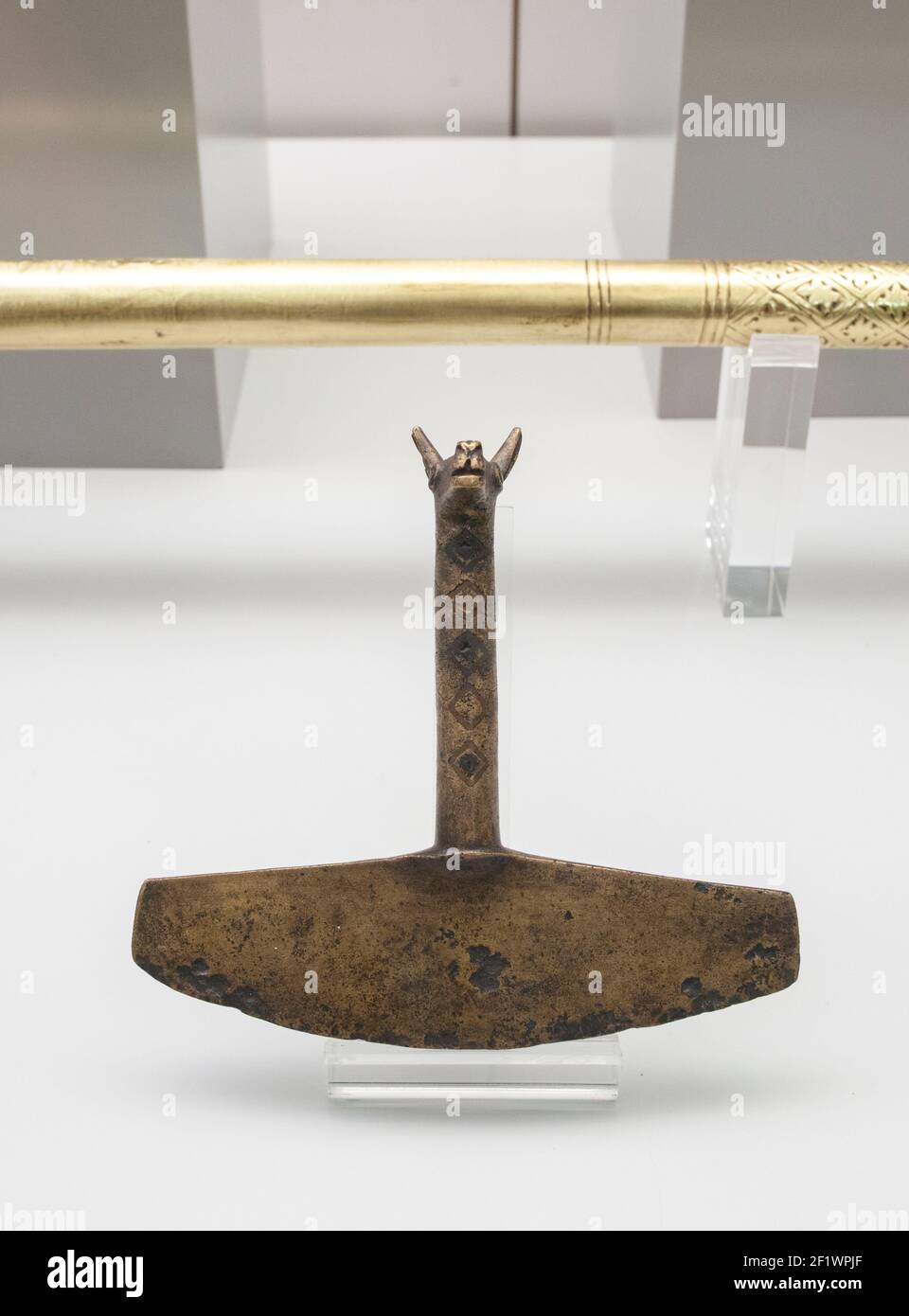 Ceremonial knife or Tumi, ornamented with llama head. Inca Culture. Late Period, 1400 AC. Museum of the Americas, Madrid Stock Photohttps://www.alamy.com/image-license-details/?v=1https://www.alamy.com/ceremonial-knife-or-tumi-ornamented-with-llama-head-inca-culture-late-period-1400-ac-museum-of-the-americas-madrid-image414230055.html
Ceremonial knife or Tumi, ornamented with llama head. Inca Culture. Late Period, 1400 AC. Museum of the Americas, Madrid Stock Photohttps://www.alamy.com/image-license-details/?v=1https://www.alamy.com/ceremonial-knife-or-tumi-ornamented-with-llama-head-inca-culture-late-period-1400-ac-museum-of-the-americas-madrid-image414230055.htmlRF2F1WPJF–Ceremonial knife or Tumi, ornamented with llama head. Inca Culture. Late Period, 1400 AC. Museum of the Americas, Madrid
 Statues of Confucian sages in the Wen Temple in the Ancient City of Pingyao, Shanxi Province, China Stock Photohttps://www.alamy.com/image-license-details/?v=1https://www.alamy.com/statues-of-confucian-sages-in-the-wen-temple-in-the-ancient-city-of-pingyao-shanxi-province-china-image256294921.html
Statues of Confucian sages in the Wen Temple in the Ancient City of Pingyao, Shanxi Province, China Stock Photohttps://www.alamy.com/image-license-details/?v=1https://www.alamy.com/statues-of-confucian-sages-in-the-wen-temple-in-the-ancient-city-of-pingyao-shanxi-province-china-image256294921.htmlRFTTY6P1–Statues of Confucian sages in the Wen Temple in the Ancient City of Pingyao, Shanxi Province, China
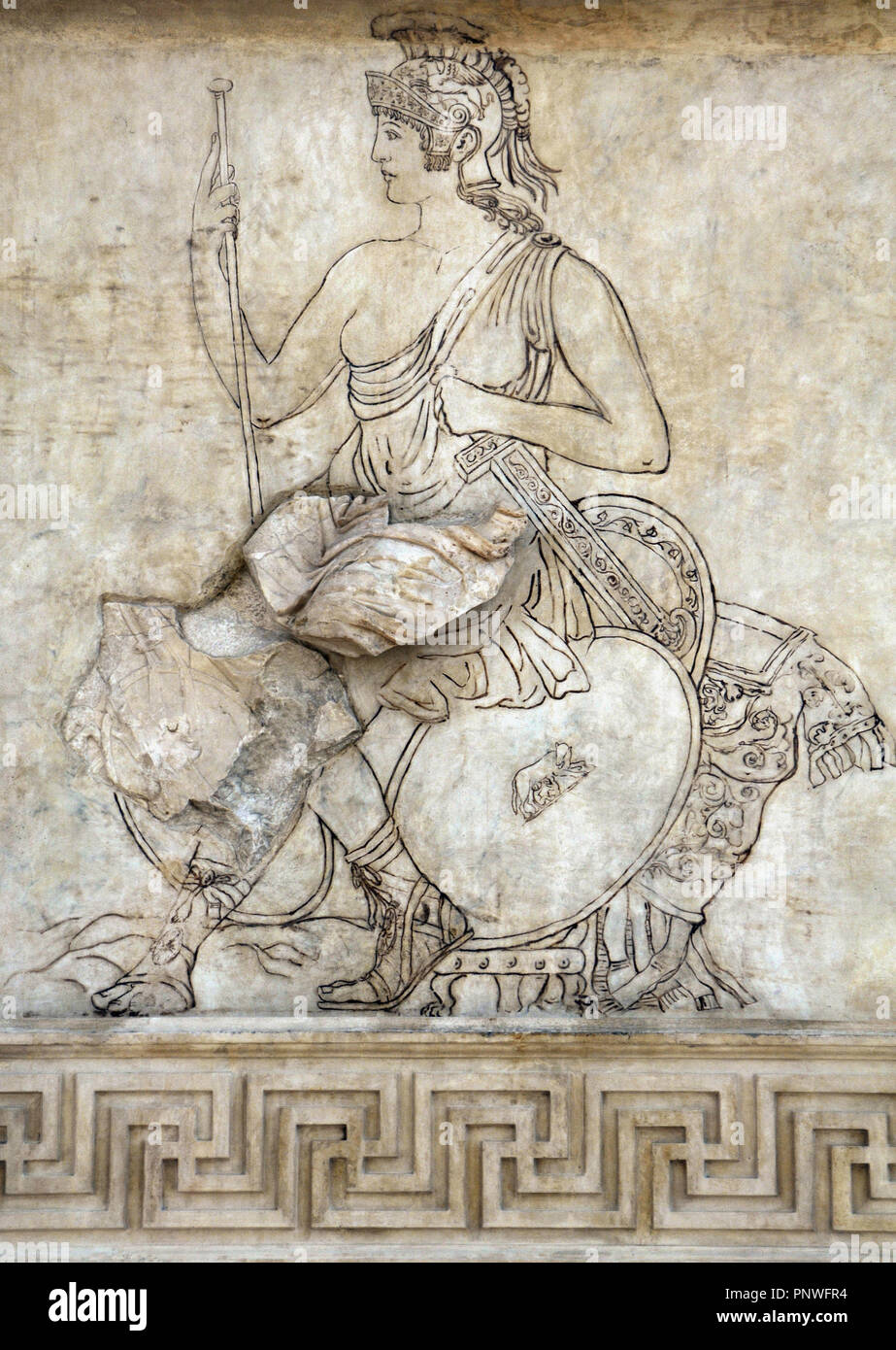 Roman Art. Italy. Ara Pacis Augustae. Dated 13th century BC. Figure of the goddess Roma, sitting on a pile of trophy weapons. Museum of the Ara Pacis. Rome. Italy. Stock Photohttps://www.alamy.com/image-license-details/?v=1https://www.alamy.com/roman-art-italy-ara-pacis-augustae-dated-13th-century-bc-figure-of-the-goddess-roma-sitting-on-a-pile-of-trophy-weapons-museum-of-the-ara-pacis-rome-italy-image219993400.html
Roman Art. Italy. Ara Pacis Augustae. Dated 13th century BC. Figure of the goddess Roma, sitting on a pile of trophy weapons. Museum of the Ara Pacis. Rome. Italy. Stock Photohttps://www.alamy.com/image-license-details/?v=1https://www.alamy.com/roman-art-italy-ara-pacis-augustae-dated-13th-century-bc-figure-of-the-goddess-roma-sitting-on-a-pile-of-trophy-weapons-museum-of-the-ara-pacis-rome-italy-image219993400.htmlRMPNWFR4–Roman Art. Italy. Ara Pacis Augustae. Dated 13th century BC. Figure of the goddess Roma, sitting on a pile of trophy weapons. Museum of the Ara Pacis. Rome. Italy.
 Sacrificial Knife 19th century Indian, Bengal (?) or Nepalese Just as Durg? was a manifestation of the focused anger of the gods, so too was the godess K?l? (literally, 'the black one') an emanation born of the wrath of Durg?. K?l? is worshiped both as the most bloodthirsty member of the Hindu pantheon and, conversely, as the most life affirming. The goddess's dichotomous nature as destroyer and savior is implicit in sacramental weapons, which were used in the ritualistic slaughter of animals offered to her as sacrifices.K?l? is said to have sprung fully formed, in the midst of battle, from th Stock Photohttps://www.alamy.com/image-license-details/?v=1https://www.alamy.com/sacrificial-knife-19th-century-indian-bengal-or-nepalese-just-as-durg-was-a-manifestation-of-the-focused-anger-of-the-gods-so-too-was-the-godess-kl-literally-the-black-one-an-emanation-born-of-the-wrath-of-durg-kl-is-worshiped-both-as-the-most-bloodthirsty-member-of-the-hindu-pantheon-and-conversely-as-the-most-life-affirming-the-goddesss-dichotomous-nature-as-destroyer-and-savior-is-implicit-in-sacramental-weapons-which-were-used-in-the-ritualistic-slaughter-of-animals-offered-to-her-as-sacrificeskl-is-said-to-have-sprung-fully-formed-in-the-midst-of-battle-from-th-image457795145.html
Sacrificial Knife 19th century Indian, Bengal (?) or Nepalese Just as Durg? was a manifestation of the focused anger of the gods, so too was the godess K?l? (literally, 'the black one') an emanation born of the wrath of Durg?. K?l? is worshiped both as the most bloodthirsty member of the Hindu pantheon and, conversely, as the most life affirming. The goddess's dichotomous nature as destroyer and savior is implicit in sacramental weapons, which were used in the ritualistic slaughter of animals offered to her as sacrifices.K?l? is said to have sprung fully formed, in the midst of battle, from th Stock Photohttps://www.alamy.com/image-license-details/?v=1https://www.alamy.com/sacrificial-knife-19th-century-indian-bengal-or-nepalese-just-as-durg-was-a-manifestation-of-the-focused-anger-of-the-gods-so-too-was-the-godess-kl-literally-the-black-one-an-emanation-born-of-the-wrath-of-durg-kl-is-worshiped-both-as-the-most-bloodthirsty-member-of-the-hindu-pantheon-and-conversely-as-the-most-life-affirming-the-goddesss-dichotomous-nature-as-destroyer-and-savior-is-implicit-in-sacramental-weapons-which-were-used-in-the-ritualistic-slaughter-of-animals-offered-to-her-as-sacrificeskl-is-said-to-have-sprung-fully-formed-in-the-midst-of-battle-from-th-image457795145.htmlRM2HGPAAH–Sacrificial Knife 19th century Indian, Bengal (?) or Nepalese Just as Durg? was a manifestation of the focused anger of the gods, so too was the godess K?l? (literally, 'the black one') an emanation born of the wrath of Durg?. K?l? is worshiped both as the most bloodthirsty member of the Hindu pantheon and, conversely, as the most life affirming. The goddess's dichotomous nature as destroyer and savior is implicit in sacramental weapons, which were used in the ritualistic slaughter of animals offered to her as sacrifices.K?l? is said to have sprung fully formed, in the midst of battle, from th
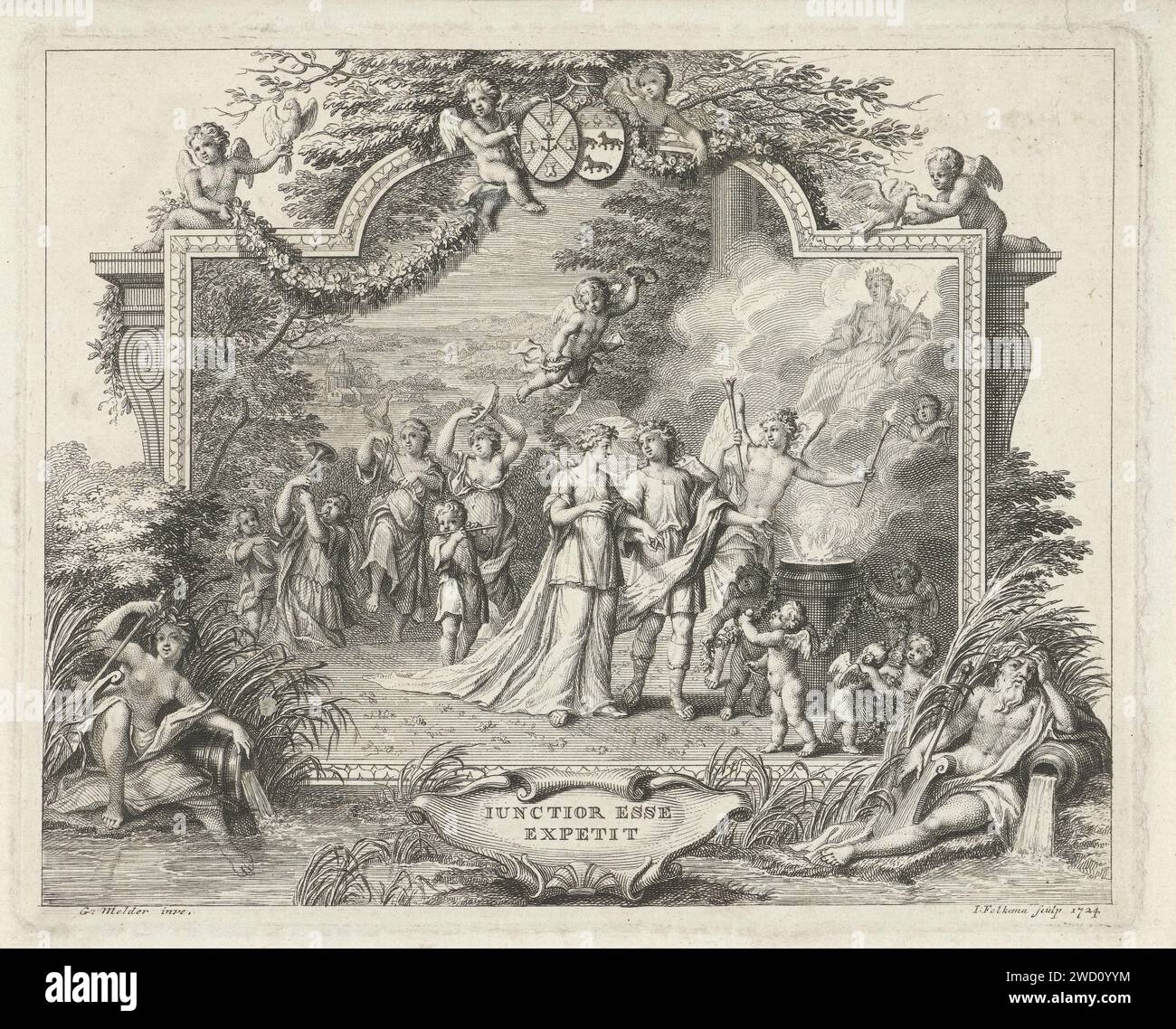 Allegory at the marriage, Jacob Folkema, After Gerard Melder, 1724 print Allegory on the marriage, placed in an elegant list where the weapons of the Neufville and De Wolff families adorn. Central is a couple who are led to the sacrificial column by an angel with fire ventures. Putti are waiting for them with flower wreaths. In the sky, Juno looks from a cloud. In the background, figures make music and a putto with two laurel wreaths. Outside the list flanked by two river gods, the text is on a cartouche: Iunctior Esse Expetit. paper etching 'Castit marriage', 'Marital faith', 'Marriage' (Rip Stock Photohttps://www.alamy.com/image-license-details/?v=1https://www.alamy.com/allegory-at-the-marriage-jacob-folkema-after-gerard-melder-1724-print-allegory-on-the-marriage-placed-in-an-elegant-list-where-the-weapons-of-the-neufville-and-de-wolff-families-adorn-central-is-a-couple-who-are-led-to-the-sacrificial-column-by-an-angel-with-fire-ventures-putti-are-waiting-for-them-with-flower-wreaths-in-the-sky-juno-looks-from-a-cloud-in-the-background-figures-make-music-and-a-putto-with-two-laurel-wreaths-outside-the-list-flanked-by-two-river-gods-the-text-is-on-a-cartouche-iunctior-esse-expetit-paper-etching-castit-marriage-marital-faith-marriage-rip-image593164984.html
Allegory at the marriage, Jacob Folkema, After Gerard Melder, 1724 print Allegory on the marriage, placed in an elegant list where the weapons of the Neufville and De Wolff families adorn. Central is a couple who are led to the sacrificial column by an angel with fire ventures. Putti are waiting for them with flower wreaths. In the sky, Juno looks from a cloud. In the background, figures make music and a putto with two laurel wreaths. Outside the list flanked by two river gods, the text is on a cartouche: Iunctior Esse Expetit. paper etching 'Castit marriage', 'Marital faith', 'Marriage' (Rip Stock Photohttps://www.alamy.com/image-license-details/?v=1https://www.alamy.com/allegory-at-the-marriage-jacob-folkema-after-gerard-melder-1724-print-allegory-on-the-marriage-placed-in-an-elegant-list-where-the-weapons-of-the-neufville-and-de-wolff-families-adorn-central-is-a-couple-who-are-led-to-the-sacrificial-column-by-an-angel-with-fire-ventures-putti-are-waiting-for-them-with-flower-wreaths-in-the-sky-juno-looks-from-a-cloud-in-the-background-figures-make-music-and-a-putto-with-two-laurel-wreaths-outside-the-list-flanked-by-two-river-gods-the-text-is-on-a-cartouche-iunctior-esse-expetit-paper-etching-castit-marriage-marital-faith-marriage-rip-image593164984.htmlRM2WD0YYM–Allegory at the marriage, Jacob Folkema, After Gerard Melder, 1724 print Allegory on the marriage, placed in an elegant list where the weapons of the Neufville and De Wolff families adorn. Central is a couple who are led to the sacrificial column by an angel with fire ventures. Putti are waiting for them with flower wreaths. In the sky, Juno looks from a cloud. In the background, figures make music and a putto with two laurel wreaths. Outside the list flanked by two river gods, the text is on a cartouche: Iunctior Esse Expetit. paper etching 'Castit marriage', 'Marital faith', 'Marriage' (Rip
![Babhruvahana Surrenders the Sacrificial Horse Syamakarna to His Father Arjuna (verso), Scenes from the Story of Babhruvahana, Folio from a Mahabharata ([War of the] Great Bharatas), c1850. Stock Photo Babhruvahana Surrenders the Sacrificial Horse Syamakarna to His Father Arjuna (verso), Scenes from the Story of Babhruvahana, Folio from a Mahabharata ([War of the] Great Bharatas), c1850. Stock Photo](https://c8.alamy.com/comp/2T1E7DC/babhruvahana-surrenders-the-sacrificial-horse-syamakarna-to-his-father-arjuna-verso-scenes-from-the-story-of-babhruvahana-folio-from-a-mahabharata-war-of-the-great-bharatas-c1850-2T1E7DC.jpg) Babhruvahana Surrenders the Sacrificial Horse Syamakarna to His Father Arjuna (verso), Scenes from the Story of Babhruvahana, Folio from a Mahabharata ([War of the] Great Bharatas), c1850. Stock Photohttps://www.alamy.com/image-license-details/?v=1https://www.alamy.com/babhruvahana-surrenders-the-sacrificial-horse-syamakarna-to-his-father-arjuna-verso-scenes-from-the-story-of-babhruvahana-folio-from-a-mahabharata-war-of-the-great-bharatas-c1850-image568869992.html
Babhruvahana Surrenders the Sacrificial Horse Syamakarna to His Father Arjuna (verso), Scenes from the Story of Babhruvahana, Folio from a Mahabharata ([War of the] Great Bharatas), c1850. Stock Photohttps://www.alamy.com/image-license-details/?v=1https://www.alamy.com/babhruvahana-surrenders-the-sacrificial-horse-syamakarna-to-his-father-arjuna-verso-scenes-from-the-story-of-babhruvahana-folio-from-a-mahabharata-war-of-the-great-bharatas-c1850-image568869992.htmlRM2T1E7DC–Babhruvahana Surrenders the Sacrificial Horse Syamakarna to His Father Arjuna (verso), Scenes from the Story of Babhruvahana, Folio from a Mahabharata ([War of the] Great Bharatas), c1850.
 Allegory on marriage. Allegory marriage, placed in an elegant list where at the top of the weapons of the Neufville families and the Wolff. Central is a couple who is led by an angel with lighthoods to the sacrificial column. Putti awaits them with flower wreaths. In the sky Juno watches from a cloud. In the background, figures make music and flies a putto with two laurel wreaths. Outside the table flanked by two river gods is on a cartouche the text: Iunctior Esse Expetit. Stock Photohttps://www.alamy.com/image-license-details/?v=1https://www.alamy.com/allegory-on-marriage-allegory-marriage-placed-in-an-elegant-list-where-at-the-top-of-the-weapons-of-the-neufville-families-and-the-wolff-central-is-a-couple-who-is-led-by-an-angel-with-lighthoods-to-the-sacrificial-column-putti-awaits-them-with-flower-wreaths-in-the-sky-juno-watches-from-a-cloud-in-the-background-figures-make-music-and-flies-a-putto-with-two-laurel-wreaths-outside-the-table-flanked-by-two-river-gods-is-on-a-cartouche-the-text-iunctior-esse-expetit-image431640732.html
Allegory on marriage. Allegory marriage, placed in an elegant list where at the top of the weapons of the Neufville families and the Wolff. Central is a couple who is led by an angel with lighthoods to the sacrificial column. Putti awaits them with flower wreaths. In the sky Juno watches from a cloud. In the background, figures make music and flies a putto with two laurel wreaths. Outside the table flanked by two river gods is on a cartouche the text: Iunctior Esse Expetit. Stock Photohttps://www.alamy.com/image-license-details/?v=1https://www.alamy.com/allegory-on-marriage-allegory-marriage-placed-in-an-elegant-list-where-at-the-top-of-the-weapons-of-the-neufville-families-and-the-wolff-central-is-a-couple-who-is-led-by-an-angel-with-lighthoods-to-the-sacrificial-column-putti-awaits-them-with-flower-wreaths-in-the-sky-juno-watches-from-a-cloud-in-the-background-figures-make-music-and-flies-a-putto-with-two-laurel-wreaths-outside-the-table-flanked-by-two-river-gods-is-on-a-cartouche-the-text-iunctior-esse-expetit-image431640732.htmlRM2G26X4C–Allegory on marriage. Allegory marriage, placed in an elegant list where at the top of the weapons of the Neufville families and the Wolff. Central is a couple who is led by an angel with lighthoods to the sacrificial column. Putti awaits them with flower wreaths. In the sky Juno watches from a cloud. In the background, figures make music and flies a putto with two laurel wreaths. Outside the table flanked by two river gods is on a cartouche the text: Iunctior Esse Expetit.
 Statues of Confucian sages in the Wen Temple in the Ancient City of Pingyao, Shanxi Province, China Stock Photohttps://www.alamy.com/image-license-details/?v=1https://www.alamy.com/statues-of-confucian-sages-in-the-wen-temple-in-the-ancient-city-of-pingyao-shanxi-province-china-image249386799.html
Statues of Confucian sages in the Wen Temple in the Ancient City of Pingyao, Shanxi Province, China Stock Photohttps://www.alamy.com/image-license-details/?v=1https://www.alamy.com/statues-of-confucian-sages-in-the-wen-temple-in-the-ancient-city-of-pingyao-shanxi-province-china-image249386799.htmlRFTDMFBB–Statues of Confucian sages in the Wen Temple in the Ancient City of Pingyao, Shanxi Province, China
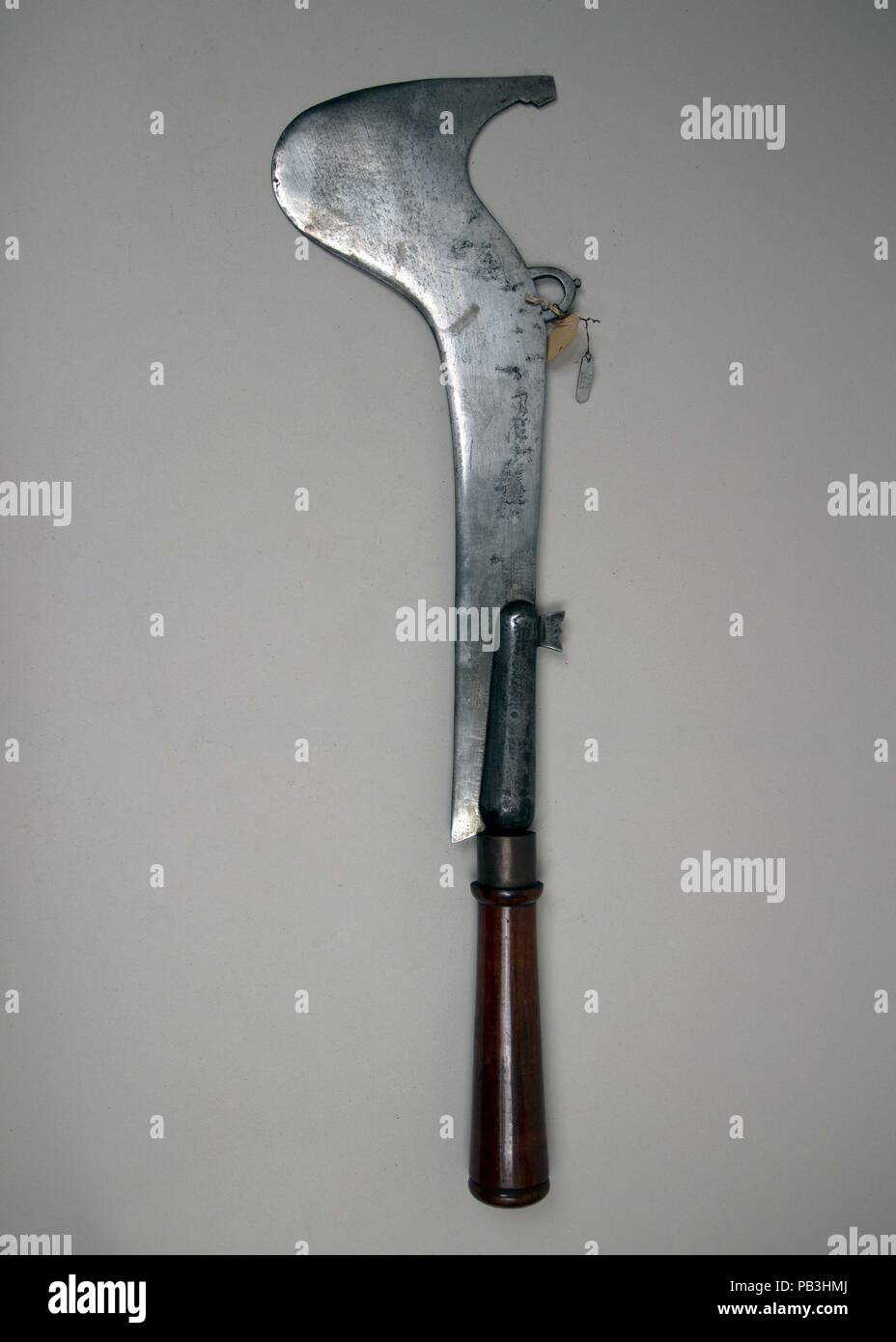 Sacrificial Axe. Culture: Indian or Nepalese. Dimensions: H. 24 in. (61 cm); W. 6 3/4 in. (17.1 cm); Wt. 2 lb. 13.8 oz. (1298.4 g). Date: 18th-19th century. Museum: Metropolitan Museum of Art, New York, USA. Stock Photohttps://www.alamy.com/image-license-details/?v=1https://www.alamy.com/sacrificial-axe-culture-indian-or-nepalese-dimensions-h-24-in-61-cm-w-6-34-in-171-cm-wt-2-lb-138-oz-12984-g-date-18th-19th-century-museum-metropolitan-museum-of-art-new-york-usa-image213365394.html
Sacrificial Axe. Culture: Indian or Nepalese. Dimensions: H. 24 in. (61 cm); W. 6 3/4 in. (17.1 cm); Wt. 2 lb. 13.8 oz. (1298.4 g). Date: 18th-19th century. Museum: Metropolitan Museum of Art, New York, USA. Stock Photohttps://www.alamy.com/image-license-details/?v=1https://www.alamy.com/sacrificial-axe-culture-indian-or-nepalese-dimensions-h-24-in-61-cm-w-6-34-in-171-cm-wt-2-lb-138-oz-12984-g-date-18th-19th-century-museum-metropolitan-museum-of-art-new-york-usa-image213365394.htmlRMPB3HMJ–Sacrificial Axe. Culture: Indian or Nepalese. Dimensions: H. 24 in. (61 cm); W. 6 3/4 in. (17.1 cm); Wt. 2 lb. 13.8 oz. (1298.4 g). Date: 18th-19th century. Museum: Metropolitan Museum of Art, New York, USA.
![Babhruvahana Surrenders the Sacrificial Horse Syamakarna to His Father Arjuna (verso), Scenes from the Story of Babhruvahana, Folio from a Mahabharata ([War of the] Great Bharatas), c1850. Stock Photo Babhruvahana Surrenders the Sacrificial Horse Syamakarna to His Father Arjuna (verso), Scenes from the Story of Babhruvahana, Folio from a Mahabharata ([War of the] Great Bharatas), c1850. Stock Photo](https://c8.alamy.com/comp/2T1E7DB/babhruvahana-surrenders-the-sacrificial-horse-syamakarna-to-his-father-arjuna-verso-scenes-from-the-story-of-babhruvahana-folio-from-a-mahabharata-war-of-the-great-bharatas-c1850-2T1E7DB.jpg) Babhruvahana Surrenders the Sacrificial Horse Syamakarna to His Father Arjuna (verso), Scenes from the Story of Babhruvahana, Folio from a Mahabharata ([War of the] Great Bharatas), c1850. Stock Photohttps://www.alamy.com/image-license-details/?v=1https://www.alamy.com/babhruvahana-surrenders-the-sacrificial-horse-syamakarna-to-his-father-arjuna-verso-scenes-from-the-story-of-babhruvahana-folio-from-a-mahabharata-war-of-the-great-bharatas-c1850-image568869991.html
Babhruvahana Surrenders the Sacrificial Horse Syamakarna to His Father Arjuna (verso), Scenes from the Story of Babhruvahana, Folio from a Mahabharata ([War of the] Great Bharatas), c1850. Stock Photohttps://www.alamy.com/image-license-details/?v=1https://www.alamy.com/babhruvahana-surrenders-the-sacrificial-horse-syamakarna-to-his-father-arjuna-verso-scenes-from-the-story-of-babhruvahana-folio-from-a-mahabharata-war-of-the-great-bharatas-c1850-image568869991.htmlRM2T1E7DB–Babhruvahana Surrenders the Sacrificial Horse Syamakarna to His Father Arjuna (verso), Scenes from the Story of Babhruvahana, Folio from a Mahabharata ([War of the] Great Bharatas), c1850.
 Sacrificial Axe. Culture: Indian, Coorg. Dimensions: H. 25 1/2 in. (64.8 cm); W. 2 in. (5.1 cm); Wt. 2 lb. 14.4 oz. (1315.4 g). Date: 18th-19th century. Museum: Metropolitan Museum of Art, New York, USA. Stock Photohttps://www.alamy.com/image-license-details/?v=1https://www.alamy.com/sacrificial-axe-culture-indian-coorg-dimensions-h-25-12-in-648-cm-w-2-in-51-cm-wt-2-lb-144-oz-13154-g-date-18th-19th-century-museum-metropolitan-museum-of-art-new-york-usa-image213396351.html
Sacrificial Axe. Culture: Indian, Coorg. Dimensions: H. 25 1/2 in. (64.8 cm); W. 2 in. (5.1 cm); Wt. 2 lb. 14.4 oz. (1315.4 g). Date: 18th-19th century. Museum: Metropolitan Museum of Art, New York, USA. Stock Photohttps://www.alamy.com/image-license-details/?v=1https://www.alamy.com/sacrificial-axe-culture-indian-coorg-dimensions-h-25-12-in-648-cm-w-2-in-51-cm-wt-2-lb-144-oz-13154-g-date-18th-19th-century-museum-metropolitan-museum-of-art-new-york-usa-image213396351.htmlRMPB5167–Sacrificial Axe. Culture: Indian, Coorg. Dimensions: H. 25 1/2 in. (64.8 cm); W. 2 in. (5.1 cm); Wt. 2 lb. 14.4 oz. (1315.4 g). Date: 18th-19th century. Museum: Metropolitan Museum of Art, New York, USA.
 The Sacrifice of Iphigenia, second half 15th century. Stock Photohttps://www.alamy.com/image-license-details/?v=1https://www.alamy.com/the-sacrifice-of-iphigenia-second-half-15th-century-image418797457.html
The Sacrifice of Iphigenia, second half 15th century. Stock Photohttps://www.alamy.com/image-license-details/?v=1https://www.alamy.com/the-sacrifice-of-iphigenia-second-half-15th-century-image418797457.htmlRM2F99TC1–The Sacrifice of Iphigenia, second half 15th century.
 Sacrificial Axe. Culture: Indian, Coorg. Dimensions: H. 21 in. (53.5 cm); W. 5 1/4 in. (13.3 cm); Wt. 2 lb. 7.1 oz. (1108.5 g). Date: 18th-19th century. Museum: Metropolitan Museum of Art, New York, USA. Stock Photohttps://www.alamy.com/image-license-details/?v=1https://www.alamy.com/sacrificial-axe-culture-indian-coorg-dimensions-h-21-in-535-cm-w-5-14-in-133-cm-wt-2-lb-71-oz-11085-g-date-18th-19th-century-museum-metropolitan-museum-of-art-new-york-usa-image213248992.html
Sacrificial Axe. Culture: Indian, Coorg. Dimensions: H. 21 in. (53.5 cm); W. 5 1/4 in. (13.3 cm); Wt. 2 lb. 7.1 oz. (1108.5 g). Date: 18th-19th century. Museum: Metropolitan Museum of Art, New York, USA. Stock Photohttps://www.alamy.com/image-license-details/?v=1https://www.alamy.com/sacrificial-axe-culture-indian-coorg-dimensions-h-21-in-535-cm-w-5-14-in-133-cm-wt-2-lb-71-oz-11085-g-date-18th-19th-century-museum-metropolitan-museum-of-art-new-york-usa-image213248992.htmlRMPAX97C–Sacrificial Axe. Culture: Indian, Coorg. Dimensions: H. 21 in. (53.5 cm); W. 5 1/4 in. (13.3 cm); Wt. 2 lb. 7.1 oz. (1108.5 g). Date: 18th-19th century. Museum: Metropolitan Museum of Art, New York, USA.
 A King Sacrificing his Daughter, 1671. Stock Photohttps://www.alamy.com/image-license-details/?v=1https://www.alamy.com/a-king-sacrificing-his-daughter-1671-image571909023.html
A King Sacrificing his Daughter, 1671. Stock Photohttps://www.alamy.com/image-license-details/?v=1https://www.alamy.com/a-king-sacrificing-his-daughter-1671-image571909023.htmlRM2T6CKP7–A King Sacrificing his Daughter, 1671.
 The Sacrifice of Iphigenia, second half 15th century. Stock Photohttps://www.alamy.com/image-license-details/?v=1https://www.alamy.com/the-sacrifice-of-iphigenia-second-half-15th-century-image418797694.html
The Sacrifice of Iphigenia, second half 15th century. Stock Photohttps://www.alamy.com/image-license-details/?v=1https://www.alamy.com/the-sacrifice-of-iphigenia-second-half-15th-century-image418797694.htmlRM2F99TME–The Sacrifice of Iphigenia, second half 15th century.
 The Sacrifice of Iphigenia, second half 15th century. Stock Photohttps://www.alamy.com/image-license-details/?v=1https://www.alamy.com/the-sacrifice-of-iphigenia-second-half-15th-century-image418797453.html
The Sacrifice of Iphigenia, second half 15th century. Stock Photohttps://www.alamy.com/image-license-details/?v=1https://www.alamy.com/the-sacrifice-of-iphigenia-second-half-15th-century-image418797453.htmlRM2F99TBW–The Sacrifice of Iphigenia, second half 15th century.
 Handle Spout Vessel in Form of Sacrificer Wearing a Jaguar Headdress, 100 B.C./A.D. 500. Stock Photohttps://www.alamy.com/image-license-details/?v=1https://www.alamy.com/handle-spout-vessel-in-form-of-sacrificer-wearing-a-jaguar-headdress-100-bcad-500-image449094041.html
Handle Spout Vessel in Form of Sacrificer Wearing a Jaguar Headdress, 100 B.C./A.D. 500. Stock Photohttps://www.alamy.com/image-license-details/?v=1https://www.alamy.com/handle-spout-vessel-in-form-of-sacrificer-wearing-a-jaguar-headdress-100-bcad-500-image449094041.htmlRM2H2J00W–Handle Spout Vessel in Form of Sacrificer Wearing a Jaguar Headdress, 100 B.C./A.D. 500.
 The Sacrifice of Isaac, 17th-18th century. Stock Photohttps://www.alamy.com/image-license-details/?v=1https://www.alamy.com/the-sacrifice-of-isaac-17th-18th-century-image571890389.html
The Sacrifice of Isaac, 17th-18th century. Stock Photohttps://www.alamy.com/image-license-details/?v=1https://www.alamy.com/the-sacrifice-of-isaac-17th-18th-century-image571890389.htmlRM2T6BT0N–The Sacrifice of Isaac, 17th-18th century.
 Sacrifice of Isaac (recto); Jacob's Dream (verso), 1613/20. Stock Photohttps://www.alamy.com/image-license-details/?v=1https://www.alamy.com/sacrifice-of-isaac-recto-jacobs-dream-verso-161320-image491538455.html
Sacrifice of Isaac (recto); Jacob's Dream (verso), 1613/20. Stock Photohttps://www.alamy.com/image-license-details/?v=1https://www.alamy.com/sacrifice-of-isaac-recto-jacobs-dream-verso-161320-image491538455.htmlRM2KFKE8R–Sacrifice of Isaac (recto); Jacob's Dream (verso), 1613/20.
 Comanche Giving Arrows to the Medicine Rock, 1837-1839. Stock Photohttps://www.alamy.com/image-license-details/?v=1https://www.alamy.com/comanche-giving-arrows-to-the-medicine-rock-1837-1839-image418819533.html
Comanche Giving Arrows to the Medicine Rock, 1837-1839. Stock Photohttps://www.alamy.com/image-license-details/?v=1https://www.alamy.com/comanche-giving-arrows-to-the-medicine-rock-1837-1839-image418819533.htmlRM2F9ATGD–Comanche Giving Arrows to the Medicine Rock, 1837-1839.
 Sacrifice of Iphigenia, 1690-1700. On his way to the Trojan War, the Greek king Agamemnon offended the goddess Artemis by hunting and killing one of her sacred stags. She retaliates by preventing the Greek troops from reaching Troy unless Agamemnon kills his eldest daughter, Iphigenia, as a human sacrifice at Aulis. Stock Photohttps://www.alamy.com/image-license-details/?v=1https://www.alamy.com/sacrifice-of-iphigenia-1690-1700-on-his-way-to-the-trojan-war-the-greek-king-agamemnon-offended-the-goddess-artemis-by-hunting-and-killing-one-of-her-sacred-stags-she-retaliates-by-preventing-the-greek-troops-from-reaching-troy-unless-agamemnon-kills-his-eldest-daughter-iphigenia-as-a-human-sacrifice-at-aulis-image556255737.html
Sacrifice of Iphigenia, 1690-1700. On his way to the Trojan War, the Greek king Agamemnon offended the goddess Artemis by hunting and killing one of her sacred stags. She retaliates by preventing the Greek troops from reaching Troy unless Agamemnon kills his eldest daughter, Iphigenia, as a human sacrifice at Aulis. Stock Photohttps://www.alamy.com/image-license-details/?v=1https://www.alamy.com/sacrifice-of-iphigenia-1690-1700-on-his-way-to-the-trojan-war-the-greek-king-agamemnon-offended-the-goddess-artemis-by-hunting-and-killing-one-of-her-sacred-stags-she-retaliates-by-preventing-the-greek-troops-from-reaching-troy-unless-agamemnon-kills-his-eldest-daughter-iphigenia-as-a-human-sacrifice-at-aulis-image556255737.htmlRM2R8YHT9–Sacrifice of Iphigenia, 1690-1700. On his way to the Trojan War, the Greek king Agamemnon offended the goddess Artemis by hunting and killing one of her sacred stags. She retaliates by preventing the Greek troops from reaching Troy unless Agamemnon kills his eldest daughter, Iphigenia, as a human sacrifice at Aulis.
 The Oppressed, the Inquisitors, the Idolaters, 1877. Stock Photohttps://www.alamy.com/image-license-details/?v=1https://www.alamy.com/the-oppressed-the-inquisitors-the-idolaters-1877-image635653441.html
The Oppressed, the Inquisitors, the Idolaters, 1877. Stock Photohttps://www.alamy.com/image-license-details/?v=1https://www.alamy.com/the-oppressed-the-inquisitors-the-idolaters-1877-image635653441.htmlRM2YX4ECH–The Oppressed, the Inquisitors, the Idolaters, 1877.
 Abraham's Sacrifice of Isaac, 1654/56. Stock Photohttps://www.alamy.com/image-license-details/?v=1https://www.alamy.com/abrahams-sacrifice-of-isaac-165456-image444275401.html
Abraham's Sacrifice of Isaac, 1654/56. Stock Photohttps://www.alamy.com/image-license-details/?v=1https://www.alamy.com/abrahams-sacrifice-of-isaac-165456-image444275401.htmlRM2GPPDPH–Abraham's Sacrifice of Isaac, 1654/56.
 The Sacrifice of Abraham. Stock Photohttps://www.alamy.com/image-license-details/?v=1https://www.alamy.com/the-sacrifice-of-abraham-image506192836.html
The Sacrifice of Abraham. Stock Photohttps://www.alamy.com/image-license-details/?v=1https://www.alamy.com/the-sacrifice-of-abraham-image506192836.htmlRM2MBF23G–The Sacrifice of Abraham.
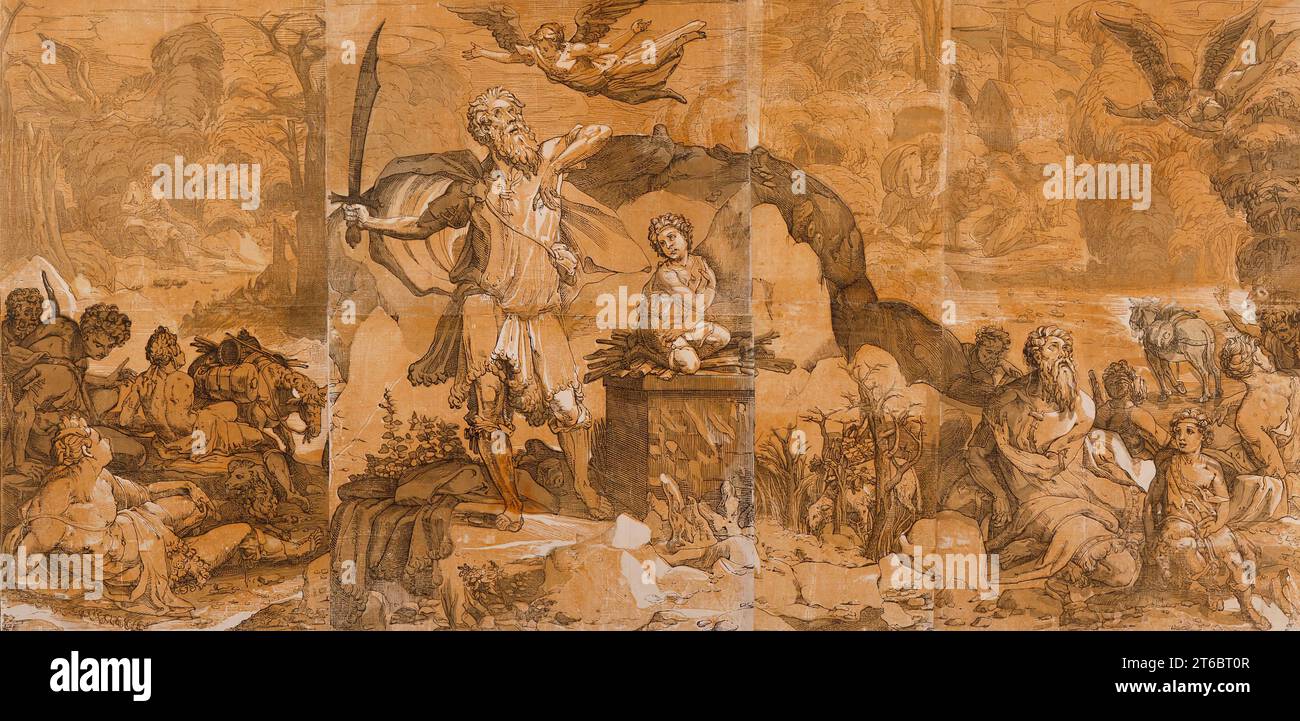 The Sacrifice of Isaac, 1586. Stock Photohttps://www.alamy.com/image-license-details/?v=1https://www.alamy.com/the-sacrifice-of-isaac-1586-image571890391.html
The Sacrifice of Isaac, 1586. Stock Photohttps://www.alamy.com/image-license-details/?v=1https://www.alamy.com/the-sacrifice-of-isaac-1586-image571890391.htmlRM2T6BT0R–The Sacrifice of Isaac, 1586.
 Initial C: The Sacrifice of Isaac; Bute Psalter, text and illumination about 1285. Stock Photohttps://www.alamy.com/image-license-details/?v=1https://www.alamy.com/initial-c-the-sacrifice-of-isaac-bute-psalter-text-and-illumination-about-1285-image631202561.html
Initial C: The Sacrifice of Isaac; Bute Psalter, text and illumination about 1285. Stock Photohttps://www.alamy.com/image-license-details/?v=1https://www.alamy.com/initial-c-the-sacrifice-of-isaac-bute-psalter-text-and-illumination-about-1285-image631202561.htmlRM2YJWN8H–Initial C: The Sacrifice of Isaac; Bute Psalter, text and illumination about 1285.
 St George Series - The Princess led to the Dragon, c1860s), 1900. Stock Photohttps://www.alamy.com/image-license-details/?v=1https://www.alamy.com/st-george-series-the-princess-led-to-the-dragon-c1860s-1900-image621689963.html
St George Series - The Princess led to the Dragon, c1860s), 1900. Stock Photohttps://www.alamy.com/image-license-details/?v=1https://www.alamy.com/st-george-series-the-princess-led-to-the-dragon-c1860s-1900-image621689963.htmlRM2Y3CBTY–St George Series - The Princess led to the Dragon, c1860s), 1900.